Music is the universal language
“Glory to God in the highest heaven, and on earth peace to those on whom his favor rests.” - Luke 2:14
Premier Guitar
EarthQuaker Devices Announces the Barrows Fuzz Attacker
Barrows pays homage to the iconic MKII circuit while adding modern refinements that would make even the most discerning vintage purist weep tears of harmonic joy. At its heart, Barrows features a trio of carefully matched germanium transistors nestled within finely tuned circuitry that has been lovingly coaxed to produce everything from light, singing distortion to crushing fuzz tones with nearly infinite harmonic-rich sustain.
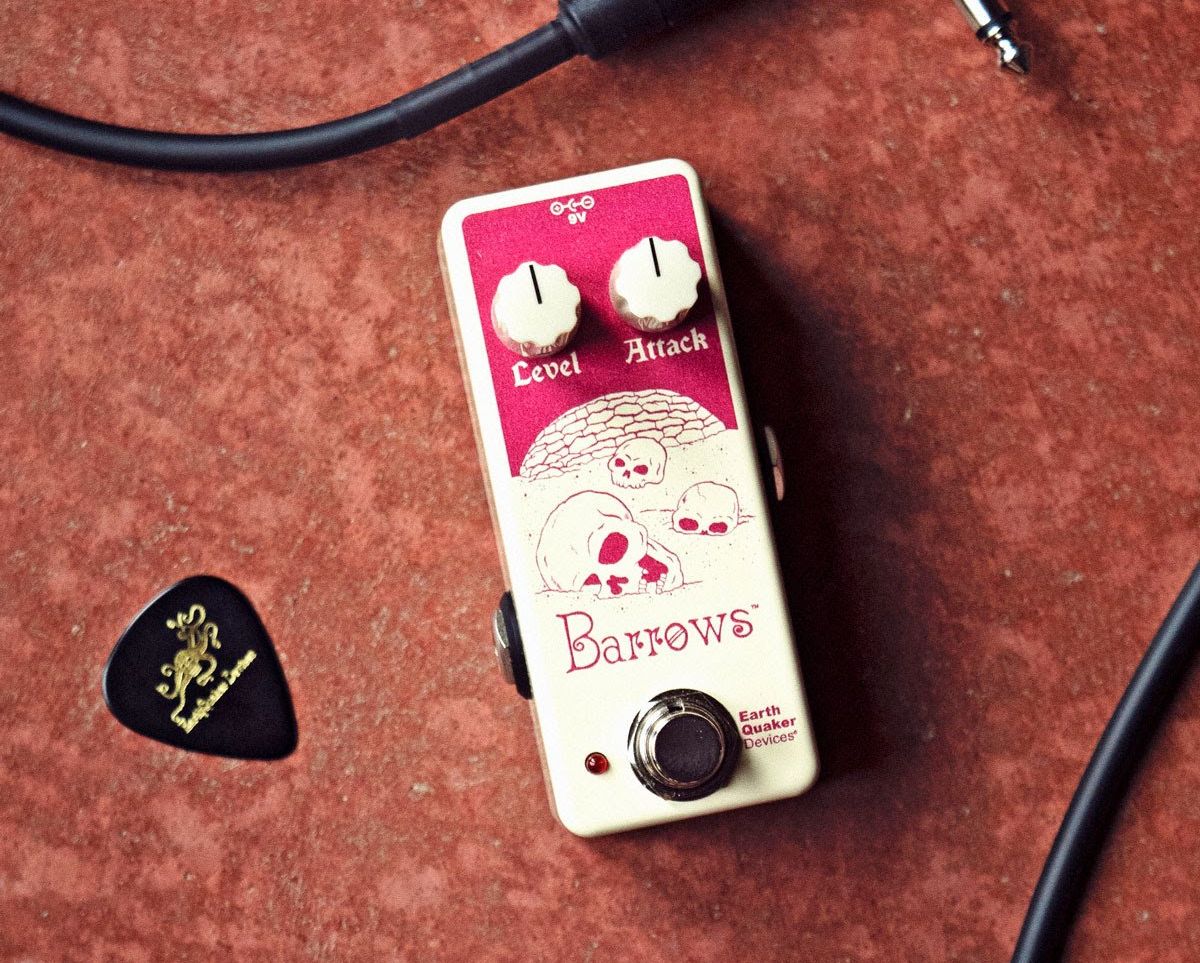
The original MKII circuit was the secret weapon behind some of the most crushing riffs ever committed to tape. From dawn-of-metal caveman dirges to the wall-of-sound symphonies conjured by the highest tiers of shoegaze sorcerers, this legendary topology has been the foundation of countless sonic monuments. Now, with Barrows, you can channel that same lightning-in-a-bottle magic while enjoying the reliability and versatility that modern craftsmanship provides.
At its heart, Barrows features a trio of carefully matched germanium transistors nestled within finely tuned circuitry that has been lovingly coaxed to produce everything from light, singing distortion to crushing fuzz tones with nearly infinite harmonic-rich sustain. This isn’t just another fuzz box – it’s a portal to the fabled tones that have haunted the dreams of fuzz fanatics for decades.
Barrows delivers the signature cutting mid-focused tones with plenty of low-end authority and brilliant top-end grind that made the original MKII a studio legend. But unlike its temperamental ancestors, Barrows includes several modern upgrades that transform it from a vintage curiosity into a contemporary powerhouse.
The phase-corrected and buffered output ensures it plays nice with other pedals down the line, while the increased output volume and wide range of fuzz tones make it a versatile sonic weapon. All this power is packed into a compact footprint that saves precious real estate on your pedalboard, because every square inch matters when you’re building your sonic arsenal.
Gone are the days of finicky positive ground power requirements and battery-only operation. Barrows runs on standard 9V power supplies, making it compatible with any common pedalboard power source. The true bypass switching ensures your signal remains pristine when the pedal is disengaged, while the MKII circuit works its germanium magic when called upon.
Each Barrows is lovingly assembled by shrimply the best helmspeople (and one obedient robot) on the high seas of Akron, Ohio, USA.
Tech Specs:
- Vintage three-transistor germanium fuzz circuit that is based on the Tone Bender MkII.
- Cutting, mid-range focused tones with loads of sustain and volume.
- Very responsive to playing dynamics and guitar volume control.
- Small form factor will fit on even the most cramped pedal boards.
- Mechanical true bypass switching
- Current Draw: 10 ma
- Input Impedance: 50 kΩ
- Output Impedance: <10 kΩ
- Limited lifetime warranty
- Retail Price: $129.00
BOSS Announces XS-100 and XS-1 Poly Shifter Pedals
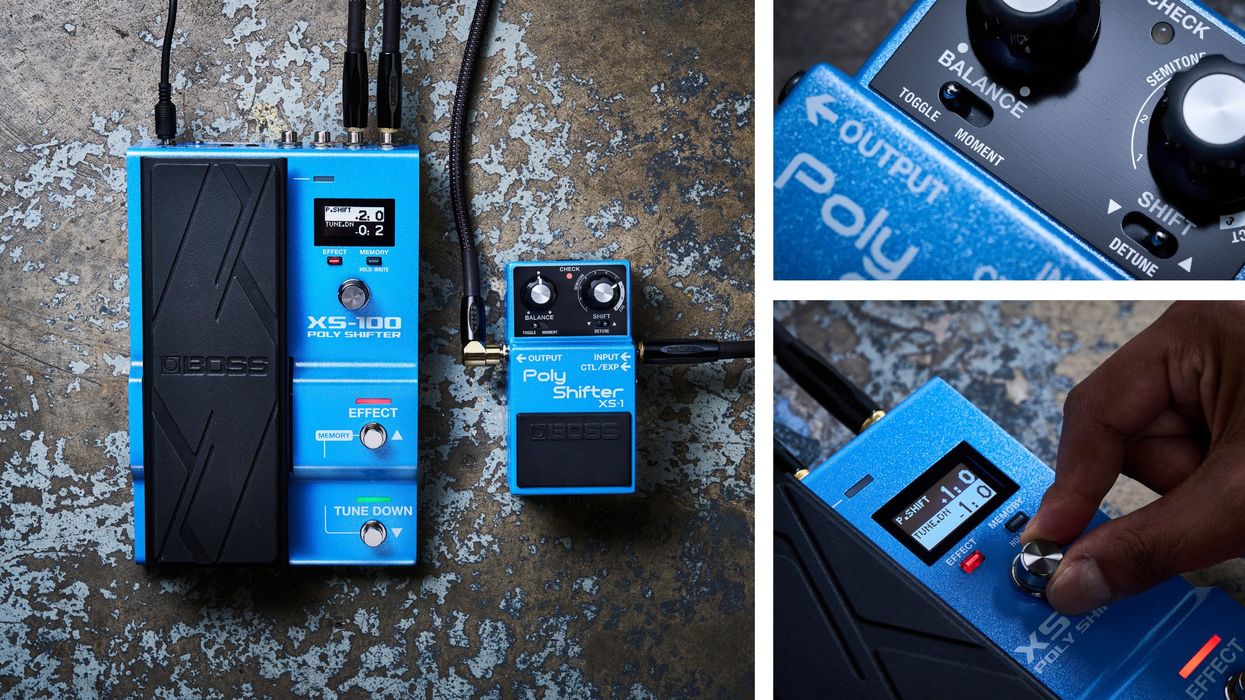
BOSS announces the XS-100 and XS-1 Poly Shifter products, two advanced pitch-shifting effects for guitar, bass, and other instruments. The XS-100 is a pitch-shifting workstation with a massive eight-octave range, real-time pitch control via an onboard pedal and footswitches, and versatile connectivity to interface with other gear. The XS-1 distills the core XS-100 features into the famous BOSS compact pedal format, providing instant drop tunings, capo simulations, octave effects, and linear pitch control with an optional expression pedal.
In developing the XS series, BOSS engineers pioneered new methods to advance real-time pitch shifting and eliminate the tonal artifacts common in conventional designs. Powered by finely tuned algorithms and a specially selected DSP platform, the XS series provides balanced polyphonic performance that feels natural and musical across all playing styles, pickup positions, and pedal setups. The attack and tonal character are fully preserved, and even complex chords and sustained lead tones—typically a challenge for pitch shifters—are reproduced with stunning clarity.
XS-100 Poly Shifter
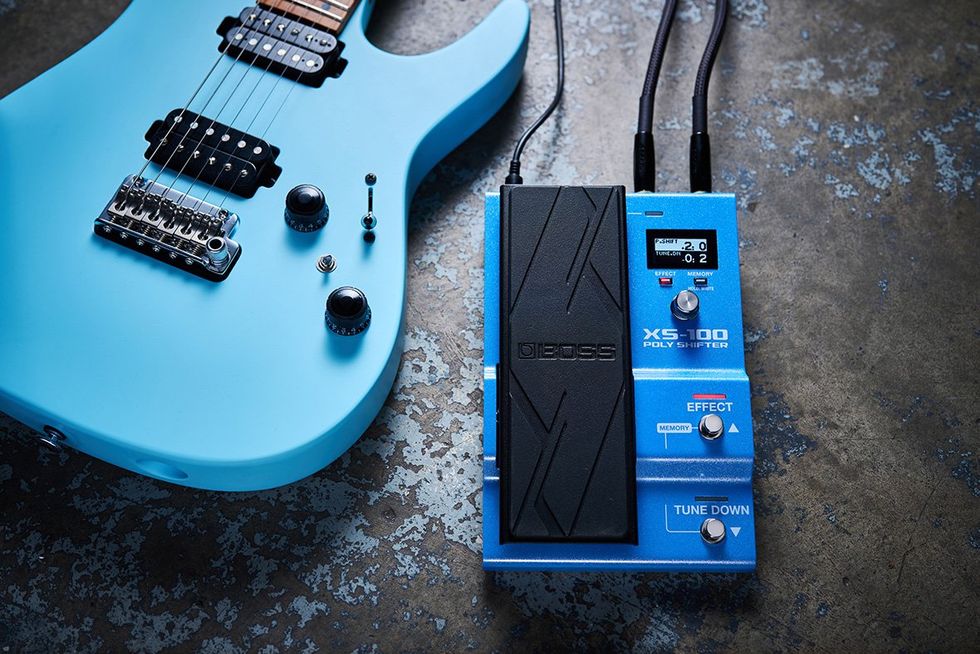
The XS-100 is a powerhouse expression machine that will transform how guitarists and bassists perform with pitch. An onboard pedal provides linear control of four octaves up or down, and independent pitch-change speeds for each pedal direction enable motor revving tones and other interesting effects. At the end of the pedal’s travel, an integrated toe switch can introduce momentary pitch jumps with adjustable range and rise/fall time. Two footswitches are also available to bypass the pedal shift and quickly retune an instrument at fixed semitone steps across eight octaves.
XS-100 users can customize the pedal’s range for different songs or techniques and fine-tune the response curve to suit different playing styles. In addition, the toe switch and footswitches can be reassigned to alternate functions. With 30 onboard memories, players can instantly recall favorite setups during live sets or studio sessions.
The XS-100 supports up to two external footswitches or an expression pedal, expanding the real-time control options. MIDI I/O opens the door to more advanced applications, from external MIDI control to sending MIDI commands with the pedal and footswitches. A secondary output mirrors the input signal, providing parallel routing flexibility for sophisticated rigs.
XS-1 Poly Shifter
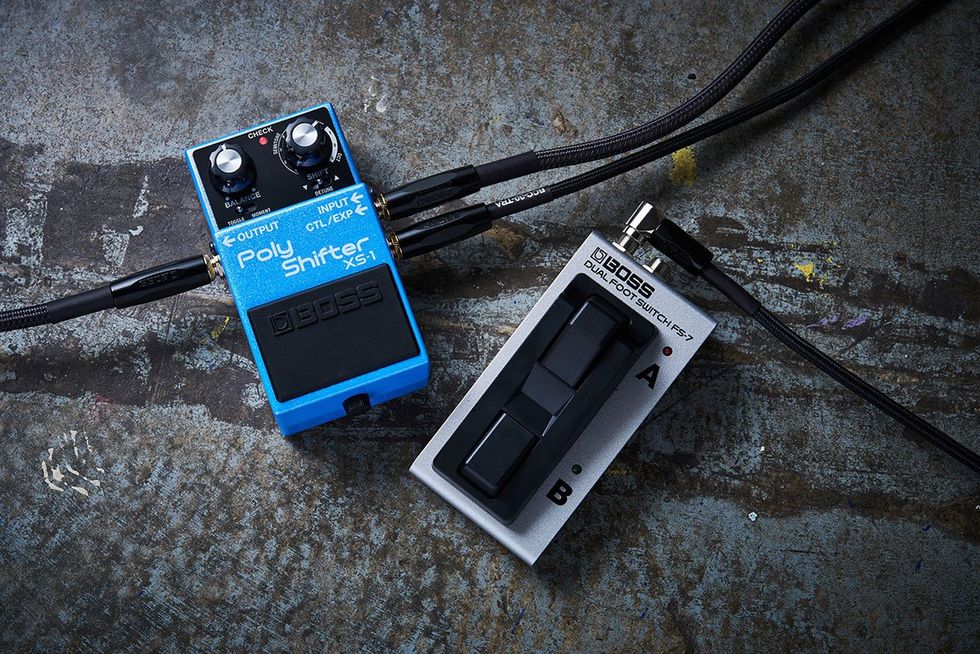
The XS-1 Poly Shifter delivers instant retuning in a convenient pedalboard-friendly footprint, making tuning changes fast, fluid, and seamless. Users can authentically perform songs in drop tunings, change keys to suit a vocalist’s range, play with unique octave-shifted sounds, and more.
Offering a range of +/- seven semitones and three octaves up or down, the XS-1 adapts to virtually any musical need. The intuitive interface features a dedicated Balance knob for adjusting the mix between the direct and effect sound. Turning the knob to effect-only allows for full retuning, while blending in the direct sound can create 12-string effects, parallel guitar/bass sounds, and unexplored sonic colors. There’s also a Detune mode to produce evocative doubling effects with high-definition tone.
The XS-1 provides many control options for different applications. The pedal switch can be assigned for standard on/off or momentary operation, and up to two external footswitches can be connected for fast access to alternate tuning modes with the user’s preferred Balance settings. Alternatively, an external expression pedal can be used to create dynamic pitch-bending effects for dramatic, ear-turning shifts.
Availability & Pricing
The BOSS XS-100 and XS-1 will be available in October 2025 for $349.99 and $199.99, respectively.
For the full press kit (available in several languages), including hi-res images, specs, and more, click here.
To learn more about the XS-100 and XS-1 Poly Shifter pedals, visit www.boss.info.
*USD Price at the time of publishing.
Darkglass Electronics Launches “Entropia”
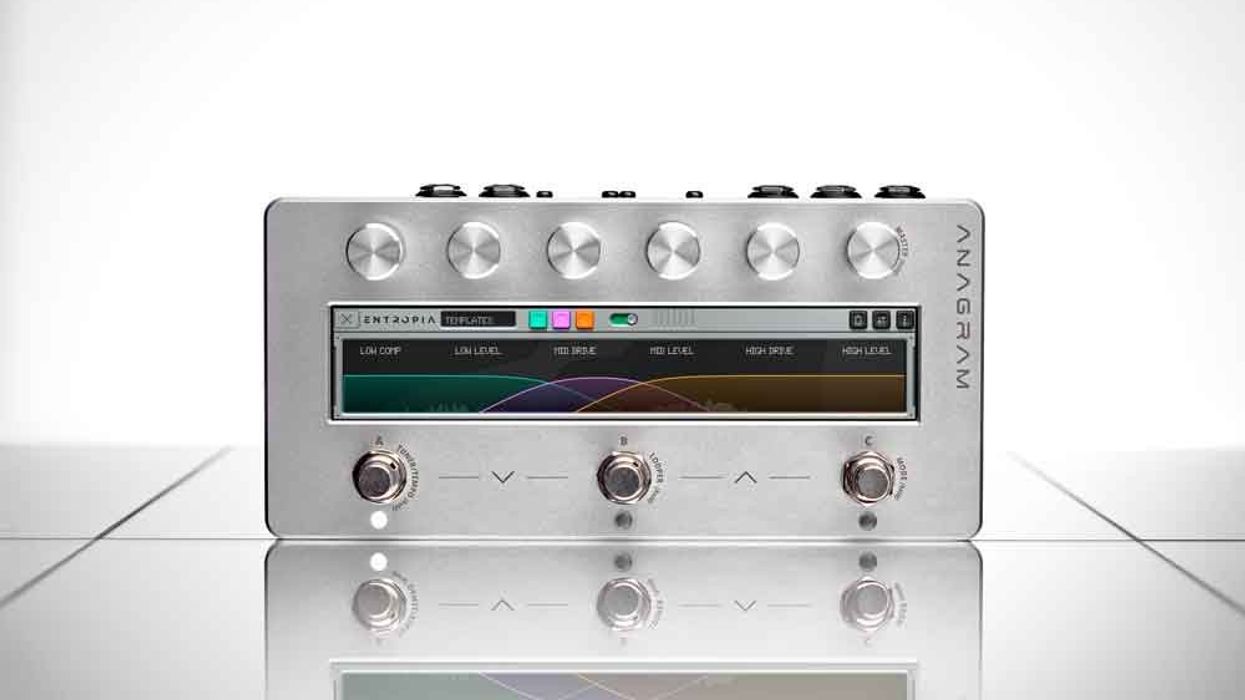
Darkglass Electronics, a global leader in high-end bass amplification and effects, proudly announces the release of Entropia, a groundbreaking multiband compression and distortion plugin designed exclusively for the Anagram platform.
Inspired by the concept of entropy, the natural progression from order to disorder, Entropia empowers musicians and producers to deconstruct and reshape sound with surgical precision. Featuring three fully independent bands (low, mid, and high), Entropia offers unparalleled control over tone sculpting, enabling users to bend, break, and rebuild their sonic landscape.
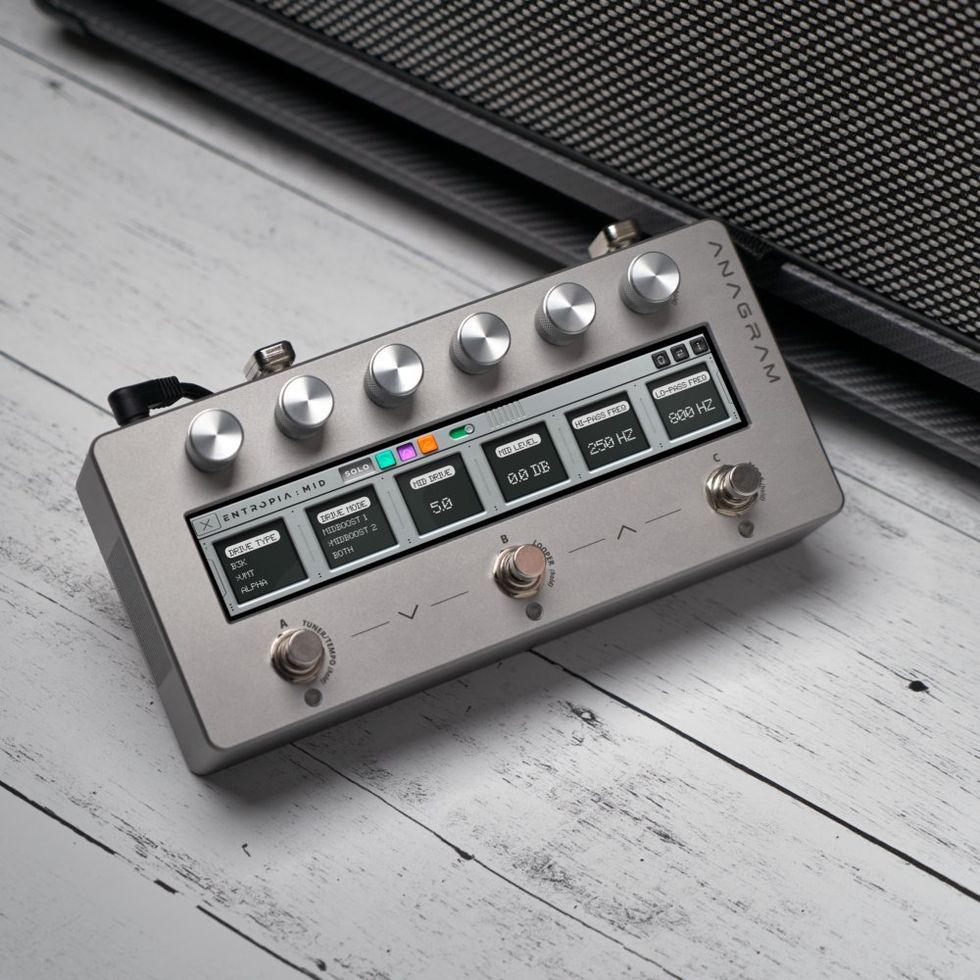
“With Entropia, we open a new door,” said Marcos Barilatti, Director Manager at Darkglass Electronics. “This plugin marks a pivotal step toward a new generation of modular tools for the Anagram platform. It expands the creative possibilities of what Anagram can achieve.”
Entropia introduces a powerful new feature called Templates, expertly curated presets that serve as intuitive starting points for tone creation. These templates allow users to explore the plugin’s full potential with ease, making it accessible to both seasoned professionals and curious newcomers. Unlike traditional distortion plugins that overwhelm the signal, Entropia offers a refined approach to sonic chaos. It’s not just compression and distortion, it’s the artful distribution of entropy, giving users the ability to shape sound with intention and clarity.
Availability
Entropia will be available for download via the Darkglass Suite app starting September 25, 2025. Please note: Anagram pedals will not update automatically. To install Entropia, users must connect their pedal to the desktop Suite and manually initiate the update.
For more information on Entropia please visit www.darkglass.com
DOD Unleashes the Overdrive Preamp 250-X – A New Chapter in a Legendary Pedal’s Story
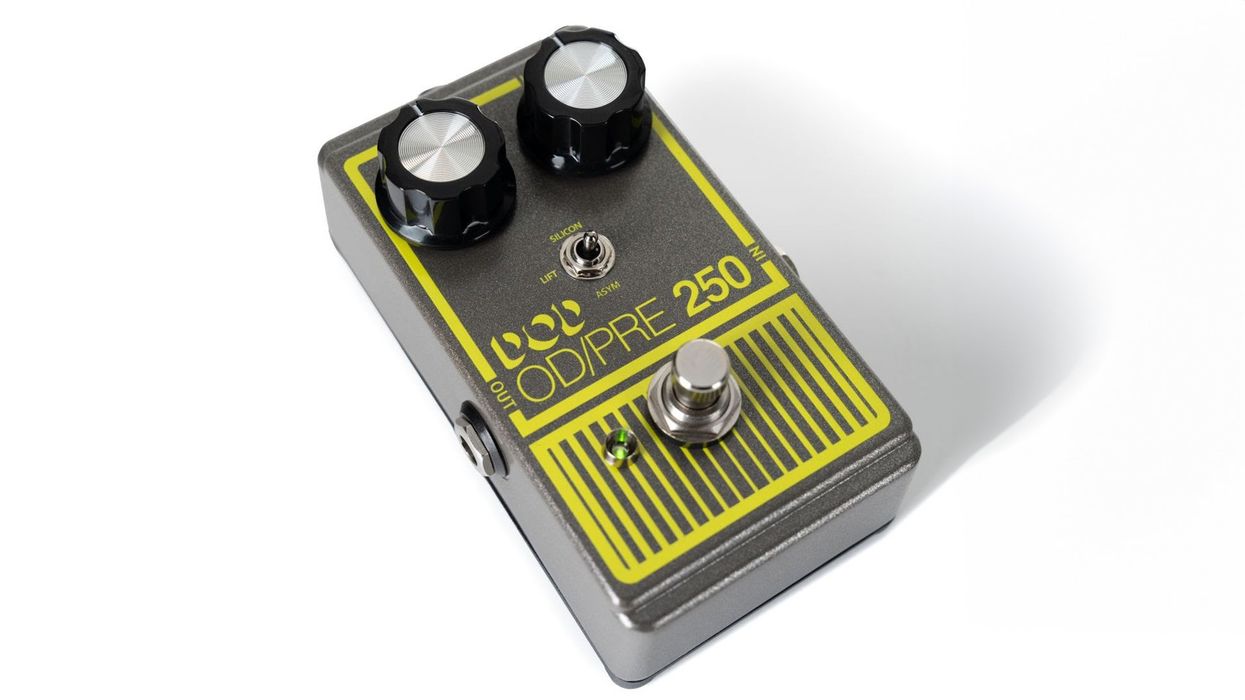
DOD today announces the release of the Overdrive Preamp 250-X, the 10th iteration of its legendary OD250 pedal. Available worldwide through local and online retailers, the 250-X delivers unmatched tonal versatility for players of all skill levels and musical styles. With three distinct distortion modes and modern refinements, the 250-X offers a fresh take on their time-tested classic at a new price point that strives to outperform its contemporaries in its category.
Inspired by the limited-edition DOD OD250-50th Anniversary model released last year, the 250-X (X representing the 10th iteration) offers the same three-position toggle switch function but in an imported, mass-produced model, at a more affordable price.
Operation is straightforward and intuitive. At its core, the 250-X retains the same Gain and Level control values and tapers as the original OD250, preserving the familiar feeling and response that players know and love. The three-position toggle switch expands its tonal range, offers Silicon symmetrical clipping for that iconic 250 sound, ASYM asymmetrical clipping for even-harmonic distortion, and LIFT mode, which removes diode clipping entirely from the signal path for a clean boost at moderate levels or a dirty boost at high levels as it drives the vintage-style LM741 op amp.
Built with an aluminum chassis and weighing in at only 8 ounces (250 grams), construction features true hard-wire bypass, modern 9V DC power input, and +18V tolerant circuitry. With ¼” connections for input and output, the pedal is ready for both stage and studio use making it the most versatile 250 to date.
For more information on the DOD Overdrive Preamp 250-X, visit www.digitech.com.
STREET: $119.99 USD
Rhpf Electronics Introduces The Twin Peaks Eiger-Mönch
Two purpose-voiced delay lines that can run in parallel or interact in a true cascade. Built to transform delay from a passing effect to a core element, shaping time, sculpting space, and unlocking textures never heard before.
RhPf Electronics has introduced the Twin Peaks Eiger-Mönch, a dual-delay pedal that reimagines how guitarists use time-based effects. No tap-tempo divisions or glitch tricks; instead, two distinct voices interact in musical and inspiring ways. One line is bright and articulate, the other warm and lush. Each has its own Rate and Repeats controls so players can shape complementary echoes that blend or collide.
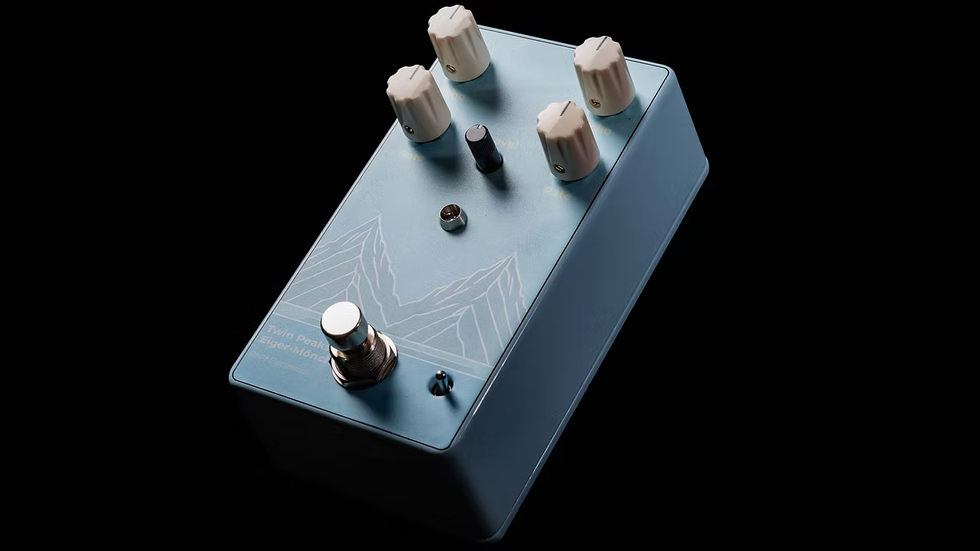
Twin Peaks Eiger-Mönch highlights include:
- Two distinct voices: warm and lush, plus bright and articulate. Each with independent Rate and Repeats.
- Parallel mode: wide, layered echoes that stay open and defined; stereo-like depth from a mono rig.
- Cascade mode: true cross-feedback so each line feeds the other; repeats intertwine and evolve into living textures.
- Designed to stay on: from subtle ambience and slapback to dub-style syncopation, always mix friendly.
- Musical feedback range: carefully tuned to avoid runaway oscillation and gimmicks.
Like every RhPf pedal, Twin Peaks Eiger-Mönch is not a clone, a mod, or a tweak. It is an original circuit designed from the ground up to be a constant companion that can become part of a player’s signature sound.
The Twin Peaks Eiger-Mönch carries a street price of $190 and is available now at select retailers and directly from RhPf Electronics.
The Who Rig Rundown
The Who need no introduction, so let’s get to the good stuff: PG’s John Bohlinger caught up with the band’s farewell tour at Fenway Park in Boston, where guitarist Pete Townshend’s tech Simon Law and bassist Jon Button’s tech Joel Ashton gave him a look at the gear that the infamous British rockers are trusting for their goodbye gigs celebrating 60-plus years together.
Brought to you by D’Addario.
Townshend’s Most Trusted
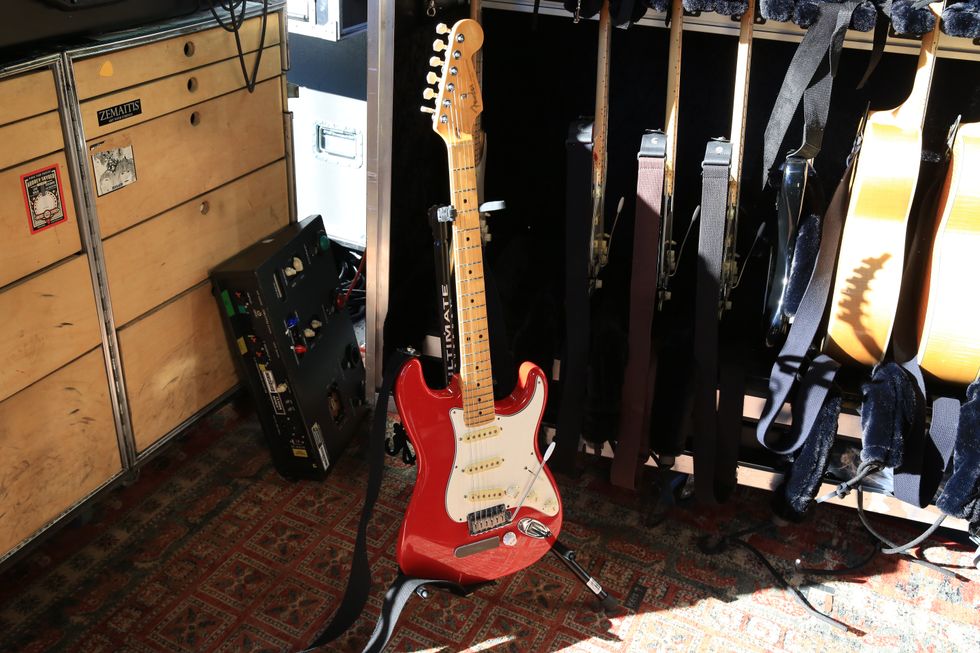
This is Townshend’s No. 1 on this end-days run. Originally an Eric Clapton Signature Stratocaster (the identifying headstock stamp has been scraped off), Law says the body and neck have been changed 10 times, and bigger frets installed. Townshend’s preferred settings are marked on the guitar and knobs.
Other mods include a Piezo bridge with a separate volume control, a stereo socket output, and a blend to mix Piezo signal with the pickups, which are Fender Noiseless models. It also has locking tuners and the Clapton mid-boost circuit, but perhaps most interesting of all is a small piece of emory board glued behind the bridge, utilized by Townshend to rough up the edges of his picks.
Stepped-Down Strat
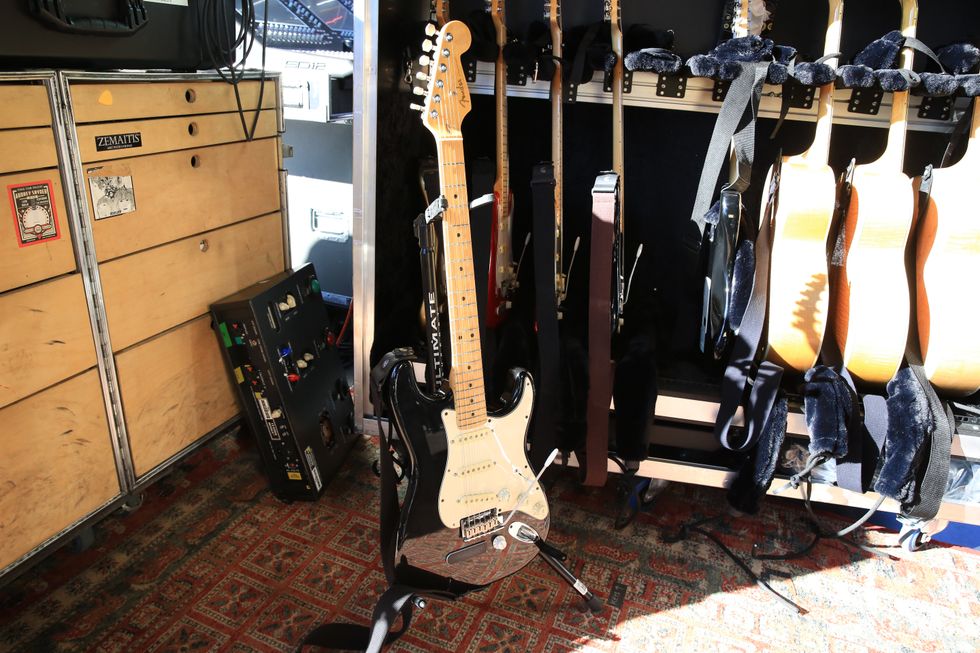
This black Strat comes out for songs in E-flat tuning.
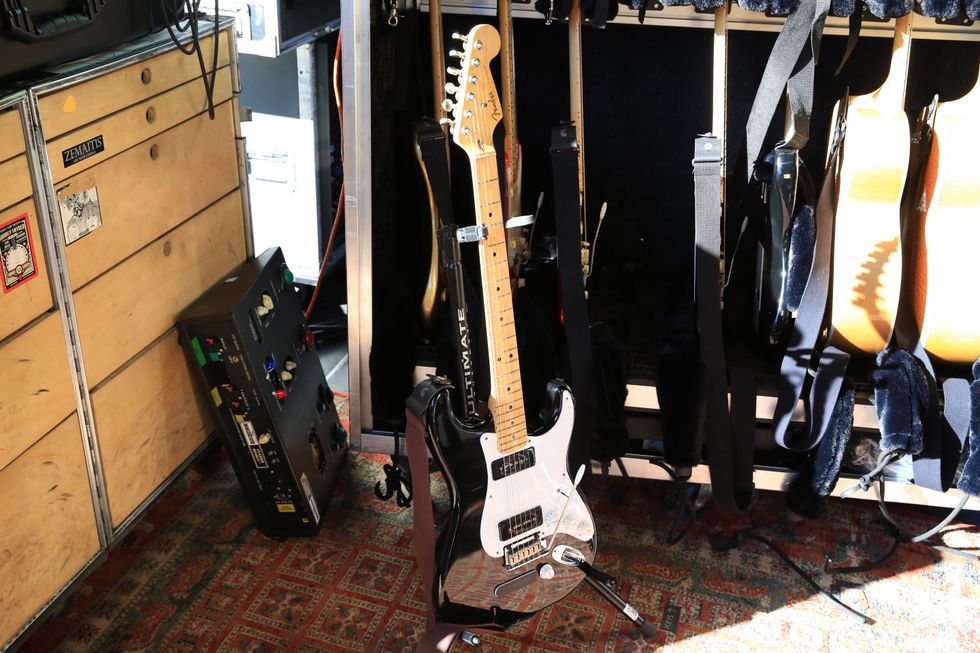
This skinny-fret Strat is loaded with P-90s in the bridge and neck, but the neck pickup is purely cosmetic—unwired and used as a killswitch.
The Quiet One
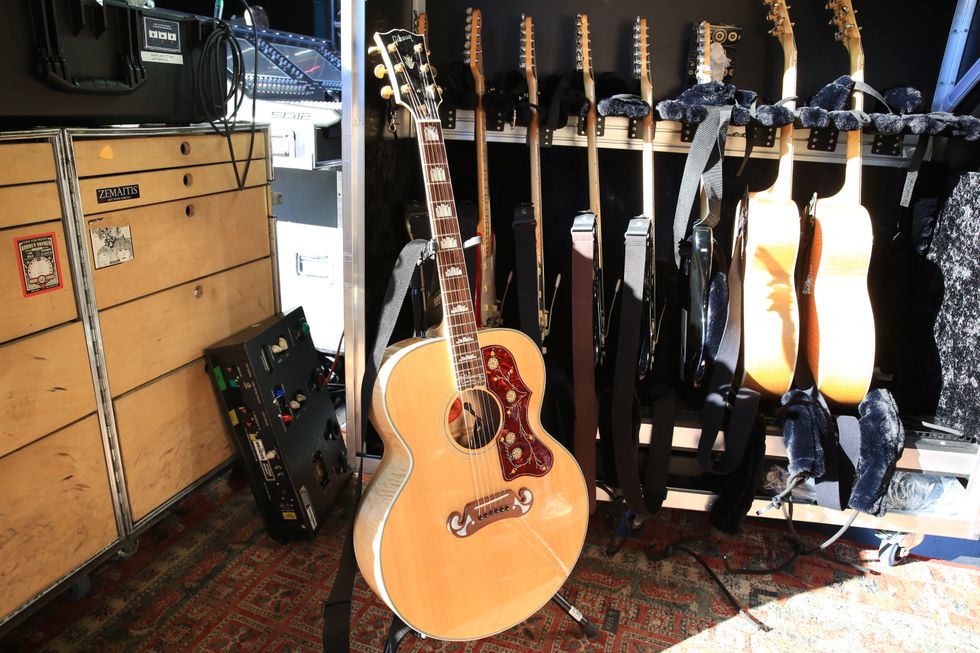
Townshend has been using Gibson J-200s forever, and this ’90s model has a Fishman Ellipse system, plus a Piezo under the bridge. It’s in standard tuning, while a signature-model backup lives in D–G–D–G–B–C. The backup has D’Addario strings (.012–.056) while the main axe has .012–.053 D’Addarios.
Addition from Alessandro
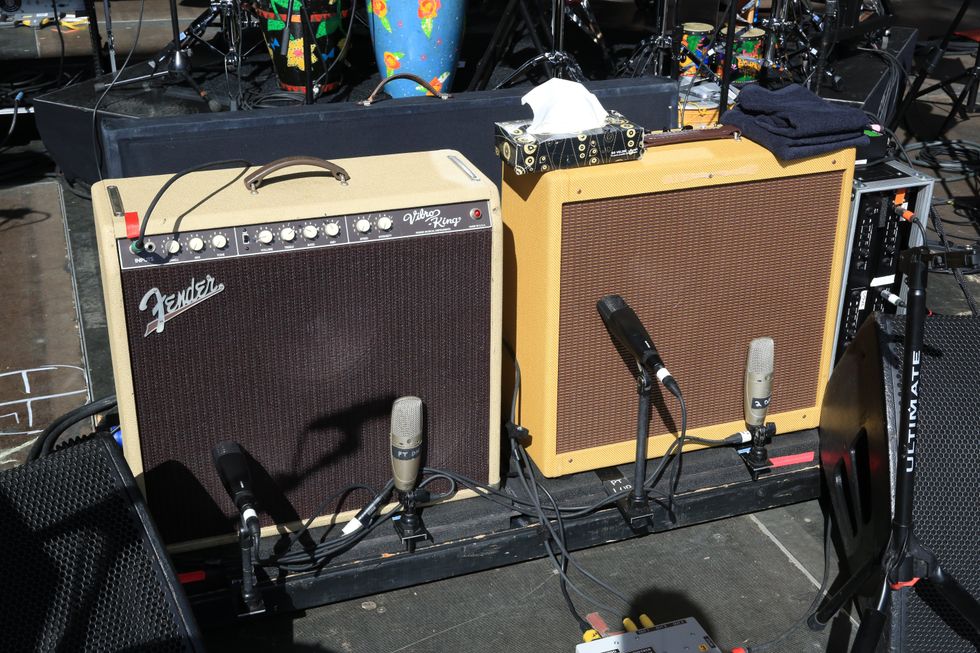
Townshend has been relying on Fender Vibro-Kings since the ’90s, and this one’s been treated to new filter caps, speakers, pots, and tubes. Law notes it’s fiddly to dial in, but always sounds great. Usually, Townshend runs a 2x12 cabinet beside it, but a desire for more control led them to have George Alessandro construct a Fender Bandmaster replica, with a 2x12 configuration.
Pete Townshend’s Pedalboard
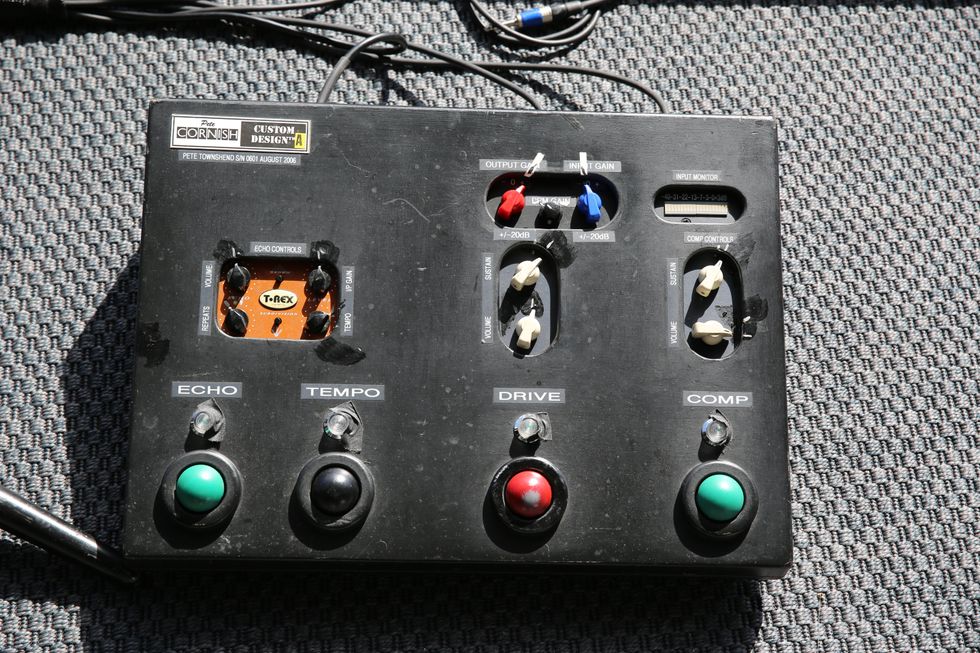
Pete’s guitars run into a Pete Cornish AC Powered 3 Way Split box, then onto a very custom Cornish-built pedalboard. Inside are just three circuits, pulled from their enclosures and wired up by Cornish: a T-Rex Effects Replica, a Boss OD-1, and a Demeter Compulator. Simon Law’s predecessor, lifelong Townshend tech Alan Rogan, had Cornish build two of these; the backup stays on hand in case of emergency. The board is also outfitted with a top-notch power supply and buffer circuit, plus the nifty “Dr. Who-style” footswitch buttons.
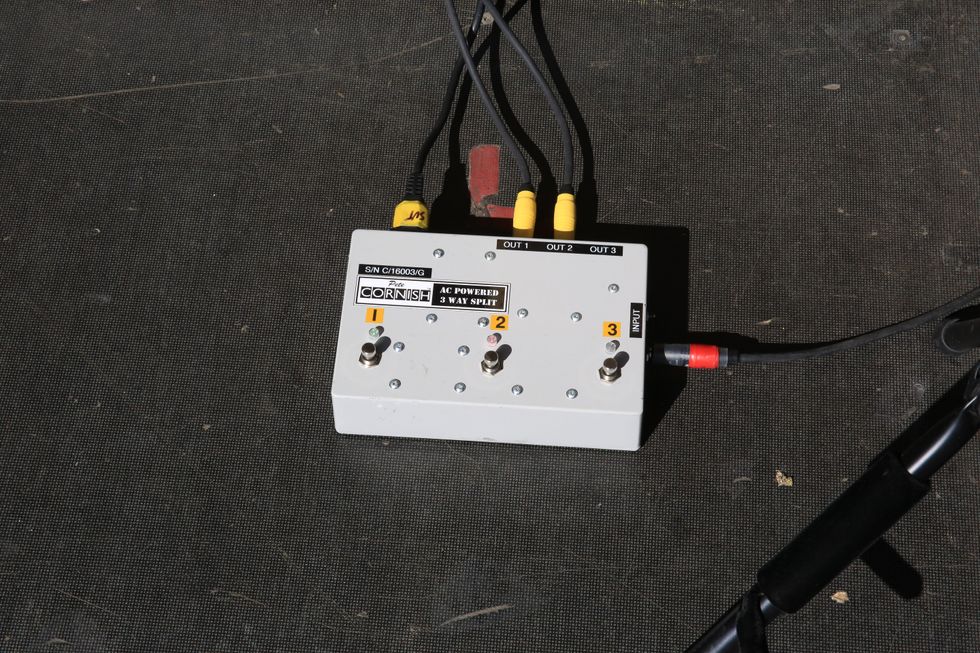
Button’s Best
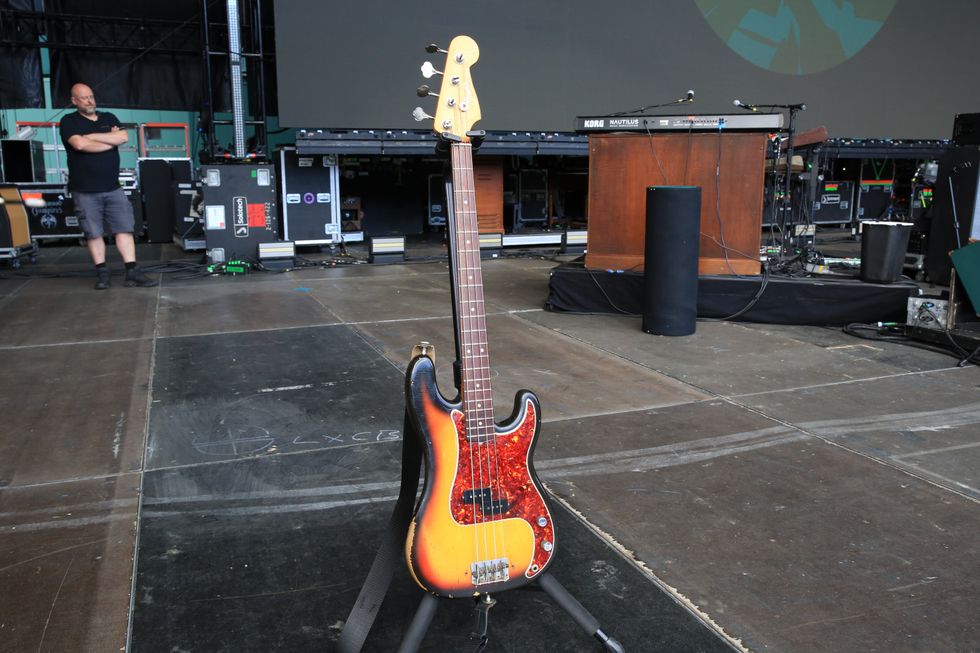
This bass, says Button’s tech Joel Ashton, is perfect. Snagged by Button in the late ’90s in Hollywood, it’s a 1965 Precision that’s been beautifully aged, and is generally used for the entire show. It’s kitted out with a Hipshot system on the D string (which drops to D flat for “Eminence Front”) and Apex strings, which Button strikes with both picks and fingers.
Mega-Monitor
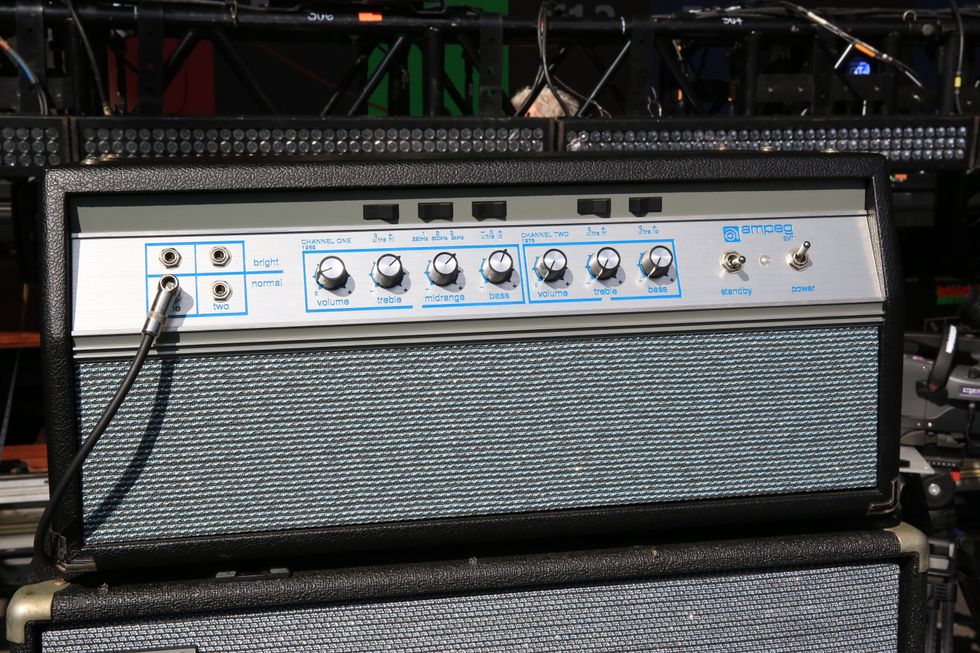
This classic Ampeg SVT is used solely as an onstage monitor for Button.
Jon Button’s Pedalboard
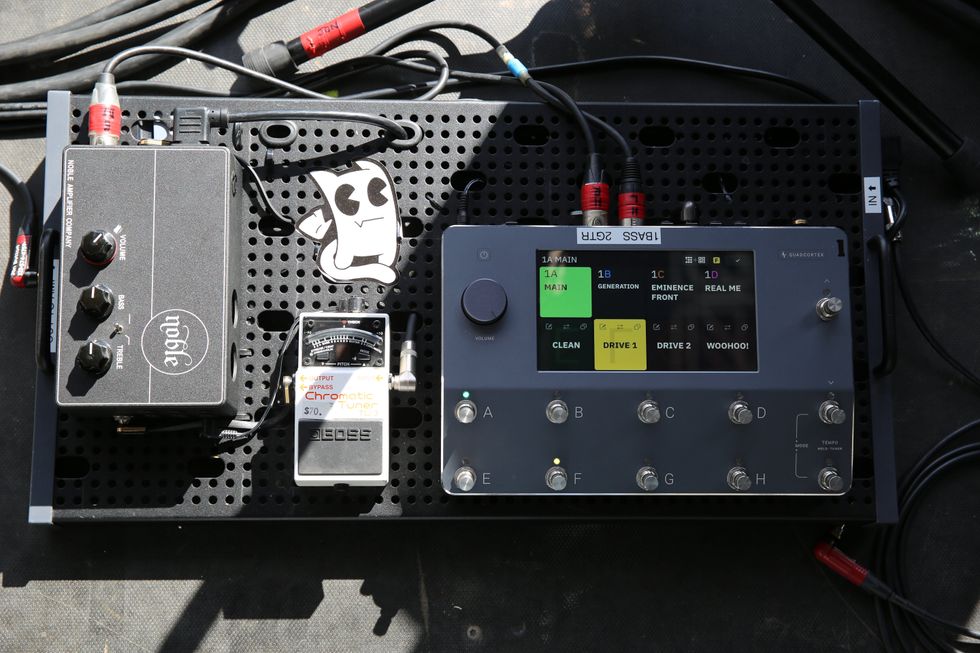
Button runs three signals to front of house: one from his Noble Preamp, and two from his Neural Quad Cortex. One of the Neural’s signals runs a stock Ampeg SVT model, and the other is an emulation of Pete Thorn’s Suhr SL68, plus four preset drive levels that Button can switch between as desired. Front of house blends the signals as they see fit.

Reverb Therapy, Part 1
Reverb is one of the most powerful colors in our palette. We all know that moment when you feel the need to add some to your tracks—whether you’re recording and looking for an inspiring new dimension, or you’re mixing and require that extra touch of spatial magic. But why are there so many options? With literally hundreds of convolution, algorithmic, plate, and spring reverbs out there, it’s easy to feel an overwhelming sense of anxiety. Knowing the differences between types of reverbs and why certain units have become legendary can significantly elevate your recordings and mixes. Tighten your belts, the Dojo is now open.
The Starting Point
I’m going to sidestep the deeply fascinating and well-researched physics and psychoacoustics behind the phenomena of reverb. Instead, we’ll focus on practical strategies for how to choose the right one (plate, spring, algorithmic or convolution), and why some types are more prized than others.
Unless you’re situated in an anechoic chamber or an open field, every environment, from a hall closet to a canyon, has reverberant properties. But before the advent of reverb chambers and plate reverbs, it was a fixed byproduct of the space where the recording took place—think of the 1961 concert document, Miles Davis at Carnegie Hall, for example. Not all concert halls lent themselves to studio quality recordings, though, especially for genres of music other than classical or opera.
After 1947, the only way to add artificial reverb was to employ a chamber—literally, a specially built room with a speaker and microphone(s). Recording studios started to develop their own echo chambers that gave a unique sonic fingerprint to the recordings, and we still prize certain studios—Abbey Road, Ocean Way, Blackbird, Motown, Sound City— for their chambers, many of which are now available in the forms of plugins.
All that began to change in 1957, in Berlin, with the advent of the EMT 140 plate reverb. EMT’s solution was brilliant: suspend a large sheet of steel under tension, feed sound into it through a transducer, and capture the shimmering decay with contact mics. The EMT 140 gave engineers long, smooth tails that felt lush without overwhelming the source. Vocals in particular took on a glow that instantly elevated a mix. That unmistakable “plate vocal sound” defined the recordings of countless artists, from Frank Sinatra to the Beatles to Jimi Hendrix to Pink Floyd. Even today, plug-in makers such as Universal Audio, Waves, and Arturia are still chasing that magic, and multiple original units are still widely used by world-class studios.
“Unless you’re situated in an anechoic chamber or an open field, every environment, from a hall closet to a canyon, has reverberant properties.”
Fast forward to 1976, and EMT again pushed things forward with the EMT 250, the first commercially available digital reverb—for the princely price of $20,000 (over $114,000 today). Only 250 units—a mini refrigerator-sized machine with controls that looked like they came off the dashboard of a spaceship—were produced. What made the EMT 250 special wasn’t just its novelty, but the way its algorithms shaped reflections. It had a character all its own: warm, slightly grainy, and wonderfully musical. Almost a proto mutli-effects processor, it didn’t try to mimic reality so much as create a believable illusion of space, and it did so with a tremendous personality. (The EMT 250 is currently available from Universal Audio as a plug-in for $249 street.)
Meanwhile, across the ocean in Massachusetts, Lexicon was hard at work refining digital reverberation. The Lexicon 224 (1978) was half the price of the EMT 250 and boasted a reverb range of 0.6 to 70 seconds. It also offered the first flexible and convincing Concert Hall, Chamber, Room, Plate, Rich Plate, and Inverse algorithms. It was the studio reverb of choice until the 480L (1986) which, with its updated signal processing power, became the studio staple—and for good reason. Chances are it’s the main big reverb on classic U2, Talking Heads, Rush, Prince, and Peter Gabriel records. The 480L’s algorithms remain benchmarks: dense, lush, and capable of everything from subtle ambience to stadium-like grandeur. Even today, if you walk into a top-tier studio, odds are a 480L is still patched in.
I encourage you to set aside some time and get to know the differences between these four classic verbs, before we move on to another set in the next installment. They are all available in plugin format with fully functional trial periods. I’ll share my favorite reverbs in order of preference and application next month. Until then, namaste.
Peavey Rock Master Preamp Pedal Imposes Its Presence onto the Pedal Board
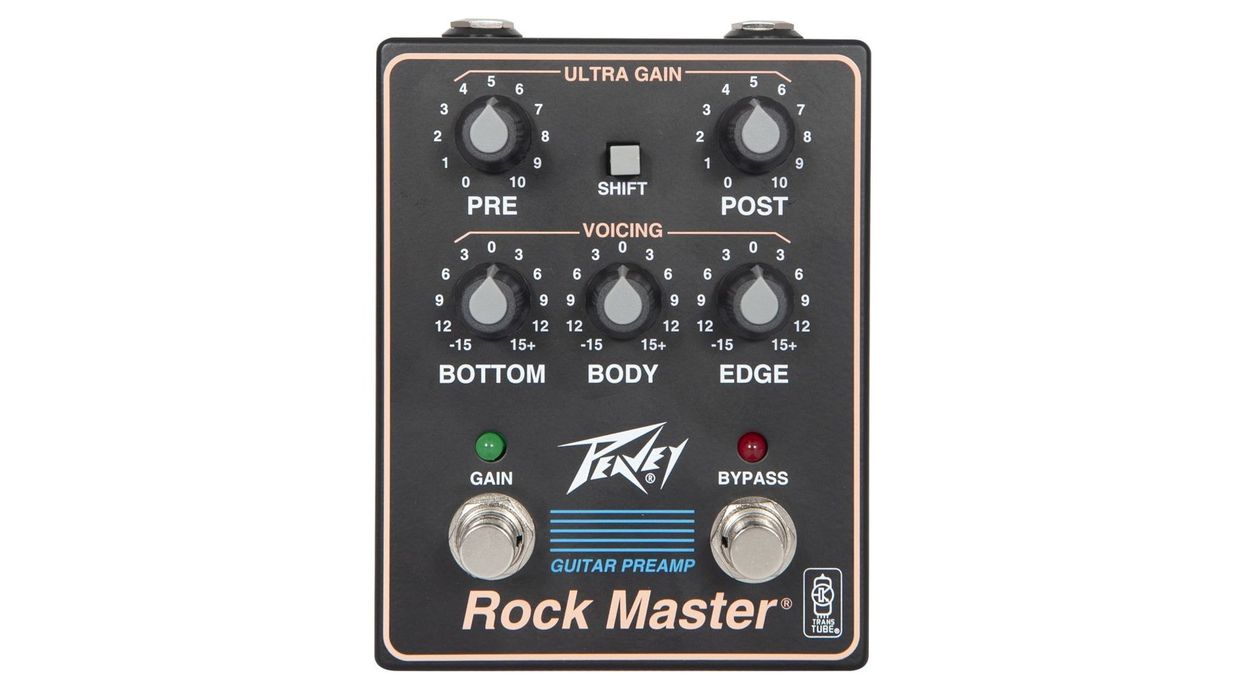
Peavey Electronics® is now shipping the latest in their new Legacy Series of pedals, the Rock Master® preamp pedal. This pedal delivers the highly sought after Ultra Gain tones of the early 90’s Rock Master Guitar Tube Preamp in a compact package small enough to fit in your back pocket. The pedal is now available worldwide through local and online retailers.
The original Rock Master Guitar Tube Preamp is what some consider to be the granddaddy of what became the Peavey XXX and JSX guitar amplifiers. Most notably, the Ultra gain section. The new Rock Master preamp pedal focuses on this Ultra Gain section and the units Voicing EQ. The units PRE and POST gain controls allow the user to control the amount of gain applied to the input signal via the PRE control and the overall output volume via the POST control. The active three band EQ/Voicing section allows players to fine tune their overall tone with BOTTOM, BODY, and EDGE controls. As it implies, the BOTTOM control is an active +/- 15dB shelving type tone control that varies the low frequency boost or cut. The BODY control is an active, peak/notch +/- 15dB tone control that varies the mid frequency boost or cut. And the EDGE is an active +/- shelving type control varying the high frequency boost and cut. Internally, it is Peavey’s TransTube® technology that brings it all together to create that groundbreaking Peavey Rock Master “Ultra” channel circuit.
Construction of the pedal uses a die-cast metal enclosure, fiberglass PCBs with 2-ounce copper and plated through holes on all components, high quality pots, switches, and jacks, and cosmetics reflecting the original preamp that influenced a whole generation of guitar amplifiers. The pedal can be used with either a 9v power supply or battery.
For more information, please visit www.Peavey.com
Retail: $199.99 USD
PRS Guitars Releases a Reclaimed Wood Limited Edition of the S2 Special Semi-Hollow
PRS Guitars today announced the launch of the S2 Special Semi-Hollow Reclaimed Limited Edition. This limited edition showcases reclaimed and salvaged woods on one of the company’s most versatile models: the S2 Special Semi-Hollow. With each top boasting its own character and left as natural as possible, every instrument is rendered unique. Only 700 pieces will be made in 2025.
The unique reclaimed material was discovered by longtime PRS wood buyer Michael Reid.
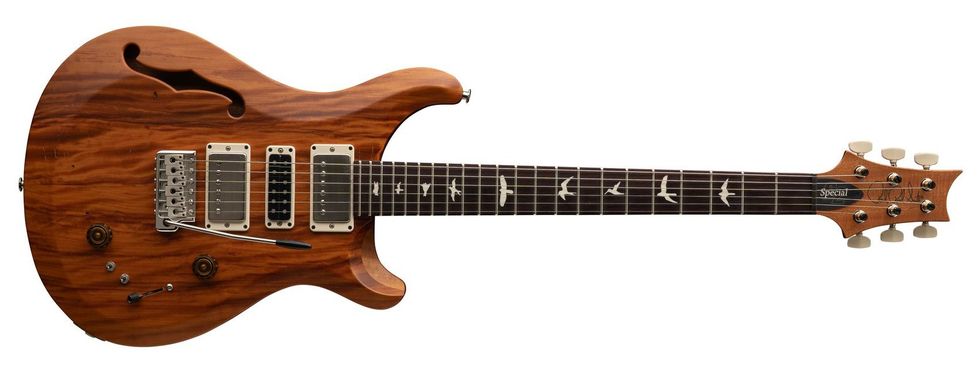
“Wood is a crucial element to our guitar making heritage. Michael Reid, our senior wood buyer, has been my curly maple wood provider and buyer since 1980 - before PRS was officially PRS - and we still work together as partners today. The deep relationships Michael has formed worldwide with our wood suppliers are remarkable. Guitars like this are a great way to highlight some of the interesting, personal stories from his travels and musical wood understanding,” said Paul Reed Smith.
The woods featured on this model include a Peroba Rosa top, Cuban mahogany neck, and Guaribu fretboard. Peroba Rosa, typically used as siding in Brazil, was selected for the top wood. The density of this 100-150-year-old wood combined with the semi-hollow body construction gives the S2 Special Semi-Hollow Reclaimed Limited Edition a unique sound that is punchy but also warm and full. The Cuban mahogany used for the necks was purchased from Puerto Rico, and some of this wood was salvaged from trees blown down by Hurricane Maria in 2017. Finally, the Guaribu Preto fretboards are sourced from Brazil, where this wood was historically used as support beams for houses. These guitars are left Natural in color and finished in satin nitro. Any nail holes, wear, or discoloration have been left in the top wood to showcase its history.
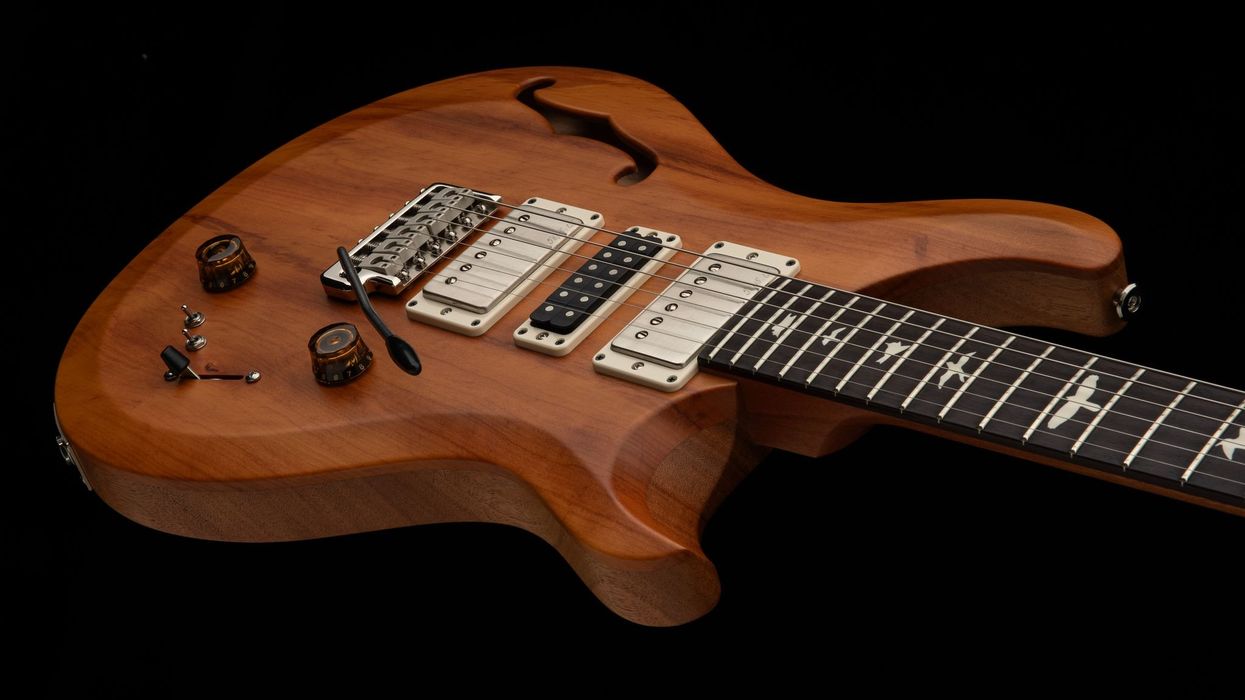
“It is impossible to fool a good guitar player. Everyone who has a guitar made from these woods sees them as a legitimate tool for serious players, not as a gimmick,” said Michael Reid, PRS Guitars Senior Wood Buyer. To hear more from Michael Reid on these woods and how these guitars came to be, visit the PRS Guitars Blog by clicking here.
Beyond their unique wood appointments, these instruments maintain many of the S2 Special Semi-Hollow’s standard specifications, including a 22-fret, 25” scale length Pattern Regular neck and hum/Narrowfield/hum pickup configuration. A 5-way blade switch and two mini-toggles allow players to tap the humbuckers, creating twelve distinct pickup combinations.
PRS Guitars continues its schedule of launching new products each month in 2025. Stay tuned to see new gear and 40th Anniversary limited-edition guitars throughout the year. For all of the latest news, click www.prsguitars.com/40 and follow @prsguitars on Instagram, Tik Tok, Facebook, X, and YouTube.
EMG’s New E-Series: Jazz Snap Meets Humbucker Punch!
PG contributor Steve Cook takes a look at EMG’s new E-Series bass pickups—a set of slim, soapbar, active pickups that feature wide-aperture coils and ceramic magnets. The E-Series offers big lows, articulate highs, and noiseless performance, the calling card of EMG’s active pickup designs. With drop-in replacement and full compatibility with EMG accessories, the E-Series presents a serious option for modern bassists.
Shop For Your E-Series: https://www.emgpickups.com/bass/e-ser...
Positive Grid and PosterLad Collaborate on Limited Edition Grille for Spark EDGE
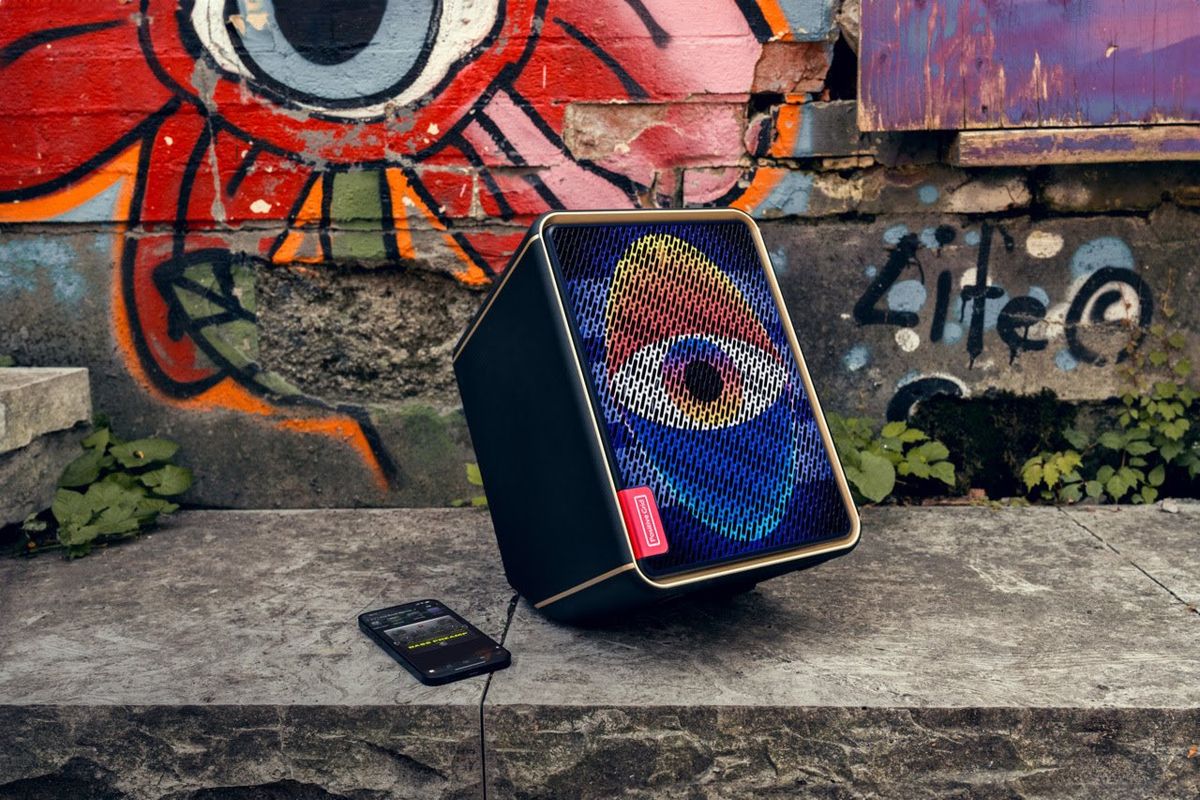
Positive Grid has teamed up with globally acclaimed visual artist PosterLad to present “See the Sound,” a custom, limited edition front grille designed exclusively for the Spark EDGE portable multi-channel smart guitar amp and PA.The design blends geometric vibrancy with sonic imagination to create a conversation between vision and sound.
PosterLad is the art project of internationally exhibited Czech designer Vratislav Pecka, whose exploration of bold color, geometry, and visual experimentation has earned global recognition and exhibitions in cities like New York and Paris. Highlighting the vision-sound connection in this custom design, PosterLad shares, “The eye is a symbol I revisit throughout much of my work. The colorful shapes underneath the eye are a visualization of sound waves emanating out from a central point that resembles a speaker cone. I call this piece ‘See The Sound.’”
About Spark EDGE
Spark EDGE is a multi-channel smart guitar amp & PA in one, designed for everyone seeking a portable, versatile, audio solution – from singer-songwriters and buskers, to acoustic duos and electric players. It packs 65 Watts of studio-quality sound, built-in amps and effects into a lightweight, compact unit that can serve as an amp, PA, or personal monitor.
Musicians can enjoy seamless and flexible connectivity for electric and acoustic guitars, bass, vocals, keyboards, and more, plus optional battery power (sold separately) that offers the freedom to perform anytime, anywhere.
In addition, a free companion app delivers convenient features that enhance any live performance, rehearsal and set list. These include a channel mixer; Creative Groove Looper; amp models; guitar and vocal effects; Smart Jam for playing live; and Spark AI to quickly generate custom guitar tones from simple text prompts.
Availability and Pricing
The Limited Edition “See the Sound” Spark EDGE grille is available for USD $49, while supplies last (see website for additional local pricing).
See it at positivegrid.com/products/spark-edge-grilles
Learn more about Spark EDGE at positivegrid.com/products/spark-edge.
The Way Huge Doom Hammer Fuzz Hits Hard & Heavy
The Way Huge Smalls Doom Hammer Fuzz will pound your ears with thick saturation worthy of high-desert riffage and dense walls of fuzz straight from a ’90s fever dream. It all began in the original Way Huge garage lab back in 1998 when Jeorge Tripps modified an op-amp-powered fuzz circuit from 1978 for the band Oranger. Prized for its less pronounced scoop, Mr. Tripps refined its design for a tighter low end and more reliable performance when played live on stage. Many years later he would craft a handful of prototypes based on that modded original—and these would be the basis for the sonic sledge now called the Doom Hammer Fuzz. Output, Tone, and Fuzz dials allow you to tailor the pedal’s velvety harmonics to your rig. Try a low Fuzz setting for the most delightful crunch.
Take up the hammer. Pound the Way Huge Doom Hammer Fuzz into your pedalboard.
It’s always darkest just before dawn…
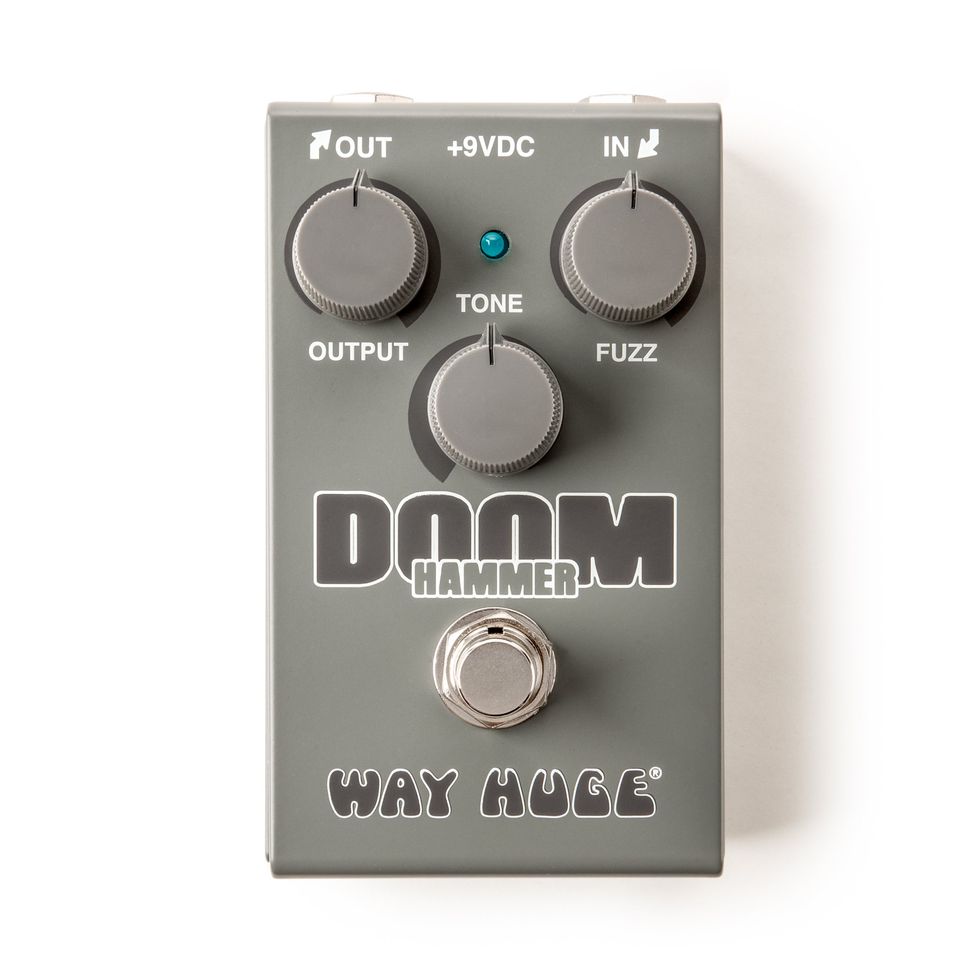
Way Huge Doom Hammer Fuzz highlights:
- Thick saturation for high-desert riffage and dense walls of ’90s fever-dream fuzz
- Based on a modded clone of an op-amp-powered fuzz circuit from 1978Tighter low end, less pronounced scoop, and improved performance on stage
- Output, Tone, and Fuzz dials tailor the pedal’s velvety harmonics to your rig
- Delightful crunch at low Fuzz settings
Availability
The Way Huge Doom Hammer Fuzz is available now at $169.99 street/$242.84 MSRP from your favorite retailer.
Way Huge Smalls Doom Hammer Fuzz Pedal
Doom Hammer Fuzz Pedal
Daniel Donato's Ever-Expanding Cosmic Country Universe

When Daniel Donato was 12, he heard “Paradise City” by Guns N’ Roses for the first time. He’d been living in Nashville since he was 7—his family had moved there from New Jersey, where he was born, after his father got a good-paying IT job with Davidson County in Tennessee—and he was just starting to become completely obsessed with guitars, guitar players, and guitar music. “I heard this certain part in the solo,” Donato recalls via Zoom from his perch in the back of a tour bus cruising through the mountains of Montana, “when it’s going into double time and Slash is hitting this….”
At this point, words fail and only scat, accompanied by enthusiastic hand-miming over a ghost fretboard, will do. “Doodala-doodala-didala-doodala-didala-doodala-daaahhh.…” He leans closer for a second, peering deeply into his phone screen to add, “It’s on the neck pickup,” then resumes his previous position. “I remember looping this piece of audio over and over because it was such bad-ness. It was like, how could a guitar possibly do that?”
Fast forward 18 years to 2025. Donato was working on his third full-length album, Horizons, with his band Cosmic Country at Sputnik Sound in Nashville. Two of the album’s most striking songs, “Chore” and “Down Bedford,” start out sounding like standard country tunes, but, over their considerable lengths (more than 11 minutes for “Chore,” almost 10 for “Down Bedford”), they morph into something more akin to prog or fusion, with dramatic time signature changes, dynamic shifts, and utterly commanding guitar solos. Think of Steve Morse’s work with the Dixie Dregs and you’ll be in the right ballpark. Sitting in the control room listening back to the final takes of these songs, Donato had a realization: He was reaching a level of musical energy he’d considered impossible as a preteen listening to Slash’s “Paradise City” solo. “I thought, ‘I’m kinda doing that,’” he says.
Donato isn’t bragging when he says this. There’s a big smile on his face, but his voice is infused with a humble awe that borders on disbelief. “It’s something that, at one point, I really prayed and worked hard to be able to do,” he says. “And now I could do it.”
Daniel Donato didn’t just achieve mastery of the guitar this year. His way with a Telecaster has been evident since at least his debut EP, 2019’s Starlight. But Horizons does bear all the signs of an early career milestone. It shows him finding his voice as a songwriter, somewhere in between the twang of Mickey Newbury and the grit of Robbie Robertson. And it’s the sharpest presentation yet of his own signature sound, which occupies the sweet spot where Americana, outlaw country, modern country, and jam-band music meet.
“I felt like I knew Jerry [Garcia] because I had the same desire, and he was giving me permission to do what he did, but in a way that was my own.”
Donato remains far from satisfied, however; he’s set his sights on something even bigger. “I’m still working on this one goal that I’ve had since I was 14 or 15,” he says. “You know when you can hear a single note from a player and you know who that player is? You can do that with Django [Reinhardt], with Jerry [Garcia], with Willie [Nelson], with all the greats. That’s my goal. If you can hear one of my notes at, like, 15-percent volume and know that it’s me, and that knowledge elicits a positive emotional response … that’s my number one, still.”
Funnily enough, Donato’s quest for individuality started with the video game Guitar Hero. “I loved playing it,” he says. “I loved practicing the game. And then, all of a sudden, one day I was like, ‘Man, I just want to play guitar.’ It really was that childlike and that simple.” Luckily, he already had an instrument on hand; his music-loving father, who was to become his first guitar teacher, had given it to him as a Christmas present several years earlier. Up until then, he’d barely touched it.
Dad did his job well. Within two years, Donato was busking on Lower Broadway in Nashville. And within three years, he was playing professionally with a local group called the Don Kelley Band and made it through the doors of Robert’s Western World, one of Music City’s few remaining genuine honky-tonk saloons, where his apprenticeship began in earnest.
“Robert’s is truly the home of traditional country music,” Donato explains. “When you go in, there are photos of Tom T. Hall hanging out there, of George Strait and Merle Haggard and Charley Pride. That building is where the pedal-steel guitar was invented. It’s where Willie Nelson bought Trigger. And it’s just a living testament to the spirit of that music. But what it is now is way different than what it was when I started going. It was only busy from 6 p.m. to closing, and then from 10 a.m. to 6, there would be these Western-swing bands that would play. All these musicians would pull up, park their cars right out front, and just go in”—unimaginable in today’s tourist-mobbed downtown.
“These were guys that played on the actual records that were being covered there,” he continues. “Amazing pedal-steel players and fiddle players that used to tour with George Jones and Merle and David Allan Coe and Johnny Paycheck, and they were just there playing for tips, picking into a Peavey solid-state amp and drinking a Budweiser. And I’d go see these guys every week and learn from them. Sometimes, once I’d gotten to know them, I’d go over to their houses and ask them, ‘What was that thing that you were doing over A7?’ and they’d say, ‘Well, I’m playing Em7 over A7, and that’s a substitution.’ And I’d be like, ‘What’s a substitution?’ It was all one-on-one. I travel this country a lot, I see a lot of places and people and music, and I haven’t seen a place like Robert’s, the way it was then.”
“I loved practicing [Guitar Hero]. And then, all of a sudden, one day I was like, ‘Man, I just want to play guitar.’”
Soon, Donato was taking private lessons with the likes of Brent Mason and Johnny Hiland, supplementing what he learned there with Advanced Placement music theory classes, and delving deep into the history and techniques of country music.
“Grady Martin and Hank Garland and Leon Rhodes, who played with Ernest Tubb for a long time, and Spider Wilson, the Grand Ole Opry’s house guitar player—they all played jazz,” he notes. “They loved Charlie Parker. They were copping Charlie Christian lines, and they were all doing that style on hollowbody guitars.
Daniel Donato’s Gear
Guitars
Two DGN Custom Epoch semi-hollow three-pickup T-style electrics
Fender Custom Shop Telecaster
Tangled String/Danny Davis custom 00-size acoustic
Amp
1966 Fender Pro Reverb
Effects
Universal Audio Max preamp/dual compressor
Keeley Rotary
Keeley Cosmic Country phaser
Keeley Manis overdrive
Keeley Noble Screamer overdrive
Walrus R1 reverb
Strymon Timeline delay
DigiTech FreqOut
Eventide H90 harmonizer
Dunlop expression pedal
Gamechanger Audio Plus sustain
Fender Tone Master Pro multieffects/amp modeler
Strymon power supplies
Strings, Picks, and Cables
Ernie Ball Cobalt Slinkys (.010–.052)
Dunlop acrylic picks
Mogami cables
They weren’t even playing Teles. And a lot of that history transitioned into the era of guitar players that I learned from, like Brent, who loves George Benson, who loves Jerry Reed—and Jerry Reed played with all those old Nashville jazz cats. There’s a lot of guitar players in Nashville who’ll do, say, a Phrygian dominant substitution over a dominant-seventh chord on a honky-tonk tune. And it’s truly Nashville, in a way that only like 30 people know.”
Donato announced his intention to join that lineage early on in his recording career. At one key moment in his blazing solo on “Meet Me in Dallas,” from his first full-length, A Young Man’s Country (2020), he repeats a high C major triad over F and E flat chords, a cool extension of the harmony that immediately thrills the ear. Hank Garland would be proud.
“Amazing pedal-steel players and fiddle players that used to tour with George Jones and Merle and David Allan Coe and Johnny Paycheck … were just there playing for tips, picking into a Peavey solid-state amp and drinking a Budweiser.”
The next foundational piece in the Daniel Donato puzzle fell into place when he was 17, playing regularly at Robert’s Western World while still in high school. At 7:30 one Thursday morning, his U.S. history teacher asked for a brief private audience after class. When class ended 45 minutes later, the teacher pulled three huge binders from behind his desk. As Donato remembers it, “He said, ‘I saw you last night at Robert’s with my fiancée, and I want to give you some music that I think you’ll like.’”
In those three binders were more than 200 CDs, all featuring music either by or related to the Grateful Dead. “It was 35 volumes of Dick’s Picks. It was the Jerry Garcia Band through every era. It was Jerry’s duo with [upright bassist] John Kahn. It was Legion of Mary [Garcia’s band with keyboardist Merl Saunders]. It was The Pizza Tapes [which Garcia recorded in 1993 with bluegrass musicians David Grisman and Tony Rice]. It was The Phil Zone [a collection of vintage Dead live recordings chosen by bassist Phil Lesh]. It was everything possible.”
Donato was familiar with the Dead to some degree—his mom was a fan and his uncle had dropped out of school to follow them around the country in his youth—but this was a far deeper immersion. The first disc he put on was Dick’s Picks Vol. 3, recorded at the Hollywood Sportatorium in Pembroke Pines, Florida, on May 22, 1977. “That has a great version of ‘Big River’ on it,” he says. “I played ‘Big River’ with Don Kelley, and I always loved that song. When I heard the Dead play it, I was like, ‘Oh man, this song could be more than four minutes long. It’s okay to hang on the A for three minutes on the intro.’ And that, to me, was something approaching a revelation: how you can take country tunes and kind of dance around them. I felt like I knew Jerry because I had the same desire, and he was giving me permission to do what he did, but in a way that was my own.”
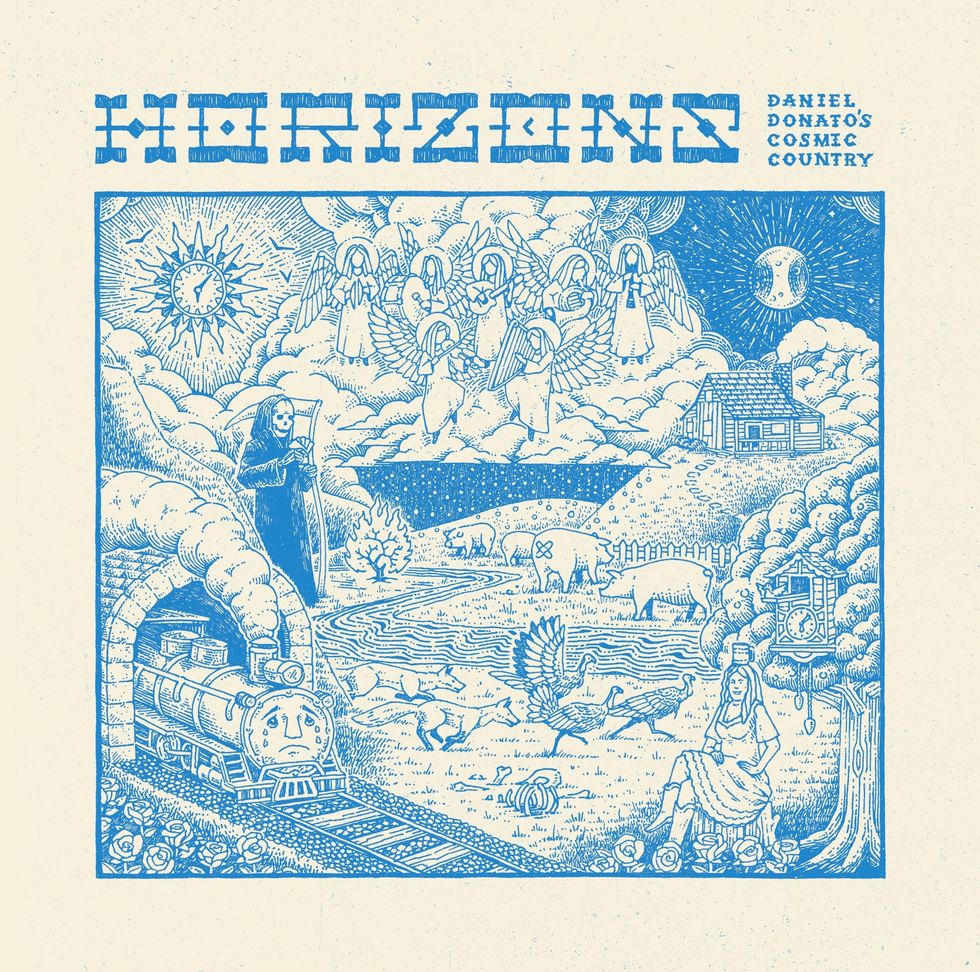
There’s no question that you can hear Garcia in Donato’s style: the long conversational solos, the playful use of arpeggios, the fondness for effects pedals—like the octave, the envelope filter, and especially the phaser—whose tones hearken back to the country-rock of the ’70s. (Although Donato points out, rightly, that the phaser was at one time a fixture of mainstream country as well: “Back in the day, all the Nashville cats would have a Maestro or MXR phaser and they’d turn it to where it’s pretty much just like a level boost. It’s barely on. That’s a real old-timey, traditional use of the effect.”)
Still, the Dead’s impact on Donato goes well beyond sound or improvisational approach or even musical qualities of any sort. The example they set as performers has helped guide him toward a way of presenting himself to the world, and the marketplace. Look at his Bandcamp page and you’ll see for sale complete recordings of every concert he’s played for the last several years. It’s a tactic that feels both generously fan-centric and cannily entrepreneurial. It also makes one think of Dick’s Picks and The Phil Zone in the way it builds a mystique around the live experience.
“There’s American bands by musical nature and then there’s American bands by functionality,” Donato posits. “And the Dead were both of those. They strived to keep ticket prices low. They played venues that they didn’t care if they didn’t sell out, because they wanted everybody to get in. They would change the set list every day because they wanted to cater to the people that were in their community. And they would give away their music [letting fans tape the concerts and then circulate the tapes among themselves]. I really like that [David] Letterman interview when Jerry said, ‘We’re done with it. It’s theirs.’ There’s a free-market element to that that’s uniquely American. And it definitely informs the ethos of Cosmic Country, in a big way.”Electro-Harmonix Introduces the Bender Royale Germanium Fuzz
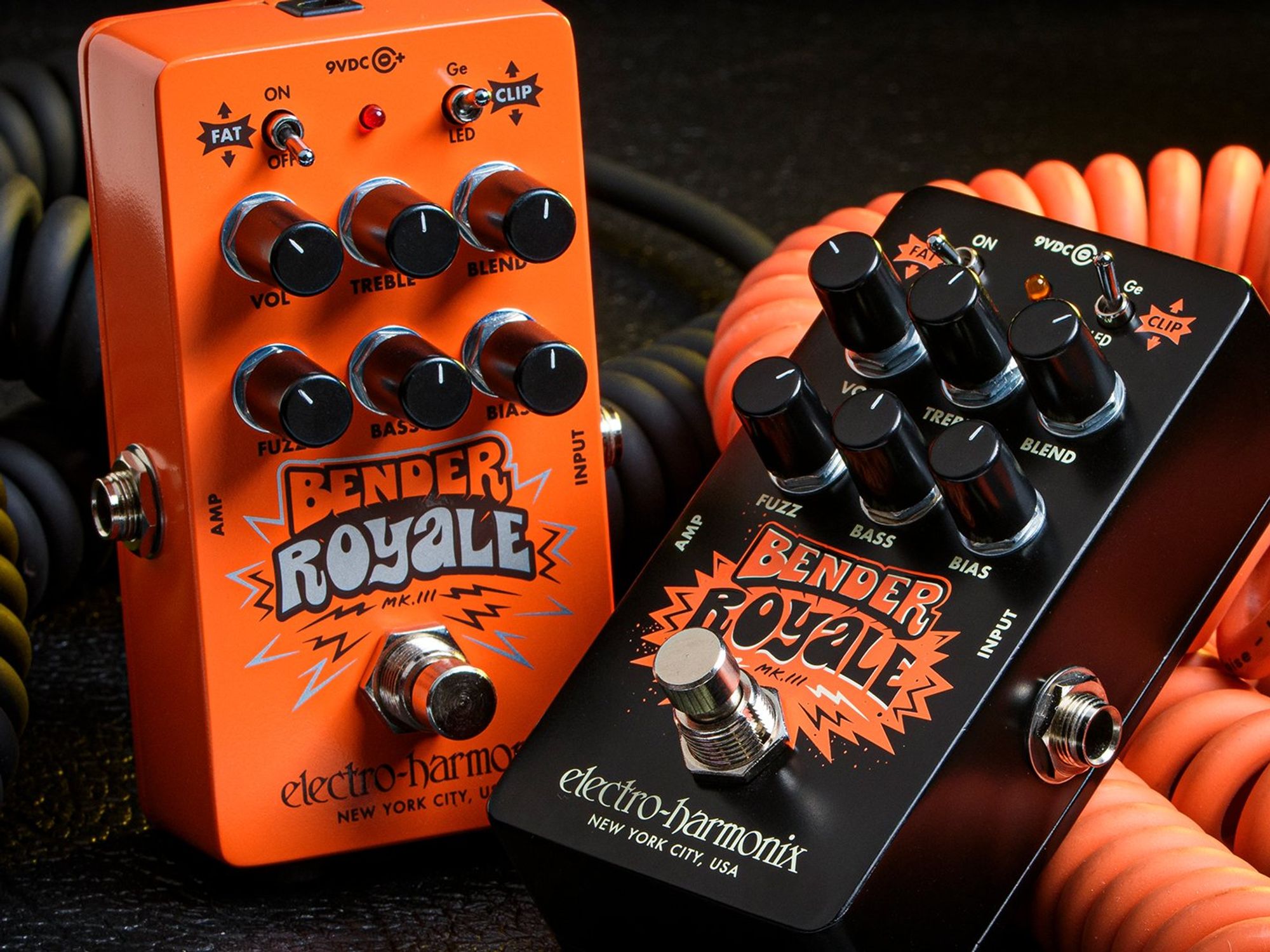
Sitting between the original vintage vibes of a 2-transistor fuzz and the over-the-top wall of sonic mayhem that is that 4-transistor Big Muff is the humble 3-transistor Tone Bender-style of fuzz known for being punchy with a unique sonic texture. The EHX Bender Royale is Electro-Harmonix’s new take on the Germanium MkIII version of the circuit with a ton of added flexibility to bend your tone even further. From thick and smooth to brash and spitty, the Bender Royale has a range of sounds all its own.
Housed in EHX’s Nano-sized chassis, the Bender Royale builds on a standard control set of VOL, FUZZ and BASS (originally Treble <-> Bass) controls for an authentic, familiar feel. The FAT switch adds bass and low-mids for tonal thickness. Use the BIAS knob to dial in a sweet spot for the perfect amount of rip or leave the circuit starving for voltage. Switching the CLIP switch from Ge to LED re-biases the final germanium transistor to produce a rougher edge on the fuzz tone. The TREBLE control is an active treble shelving filter used to rein in high frequencies. The BLEND knob mixes between your wet and dry signals and can be especially useful for maintaining clarity when using bass or stacking other drive pedals.
The Bender Royale employs mechanical relay true-bypass switching on a soft footswitch with selectable latching/momentary functionality. Tap the footswitch for normal latch switching function or press and hold for momentary blasts of fuzzy goodness.
The EHX Bender Royale comes equipped with a standard EHX 9 Volt power supply. It is available now and features a U.S. Street Price of $149.00.
Learn more at www.ehx.com
Orangewood Introduces First Semi-Hollow Electric Guitar: The Clementine
Orangewood has launched the Clementine, the brand’s first semi-hollow electric guitar and its most premium guitar release to date. As Orangewood continues to expand its lineup beyond acoustics, Clementine represents a new chapter for the brand.
Designed with a comfort-first approach, the Clementine features chambered construction, solid body, solid carved maple top, and a deep belly cut for a smooth yet resonant playing experience. Its glossy maple top paired with satin-finished mahogany back and sides delivers a refined blend of textures and looks. Grover Roto-Grip Locking Vintage tuners and a Tune-O-Matic bridge ensure stability and long-term durability.
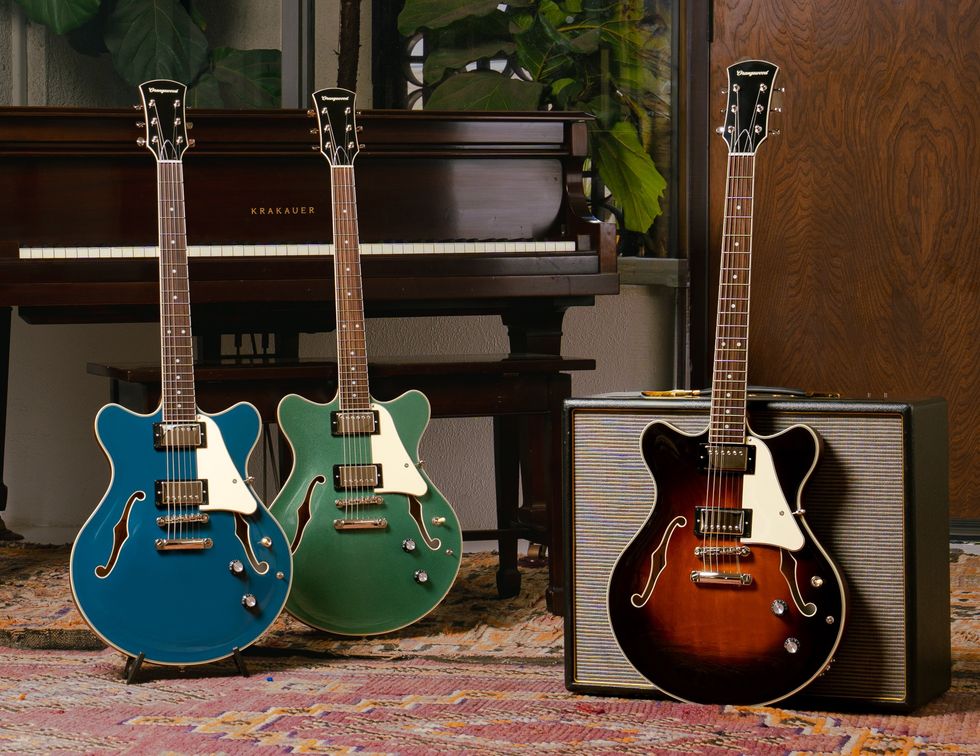
The Clementine is equipped with Seymour Duncan Seth Lover™ humbuckers, known for their warm, articulate response. A coil-split toggle alongside standard volume and tone controls provides a wide tonal range. Player-friendly features, including headstock truss rod access and an electronics backplate, make maintenance simple both at home and on tour. A retro 3-ply cream pickguard comes installed, with a bonus black pickguard for players who want to customize the guitar’s aesthetic.
The Clementine semi-hollow electric guitar is available in three finishes—Americano sunburst, Bluebird, and Evergreen—and is priced at $1,495.
KEY SPECS
- Comfort-first design: A modern semi-hollow electric guitar with chambered construction, solid carved top, and deep belly cut
- Solid wood, smooth textures: Glossy maple top with satin mahogany back & sides
- Specialty hardware: Grover Roto-Grip Locking Vintage tuners and Tune-O-Matic bridge
- Award-winning pickups: Seymour Duncan Seth Lover™ humbuckers with three-way pickup selector toggle switch; two-way coil-split toggle switch; and volume/tone controls
- Maintenance: Headstock truss rod adjustment; backplate for electronics access
- Extras: Retro 3-ply cream pickguard installed, with a bonus black pickguard to switch up your style
The Clementine is available now exclusively at orangewoodguitars.com and through select retailers. Priced at $1,495.00 with a hardcase included.
The Nashville Sound: Behind the Scenes with the City's Top Session Guitarists
If you’ve ever wondered what really happens at floor level in a Nashville studio, this one’s for you. We stitched together a handful of Rig Rundowns with the city’s busiest session guitarists, all focused on the real heroes of their rigs: the pedalboards. It’s equal parts gear tour, tone philosophy, and survival strategy for players who have to nail a part in one take.
Tom Bukovac Rig Rundown
Rob McNelley Rig Rundown
Sol Philcox-Littlefield Rig Rundown
Derek Wells Rig Rundown
Charlie Worsham - Full Rundown
Adam Shoenfeld
Overloud Announce Gem Fuse: Six Analog Processors in One Plugin
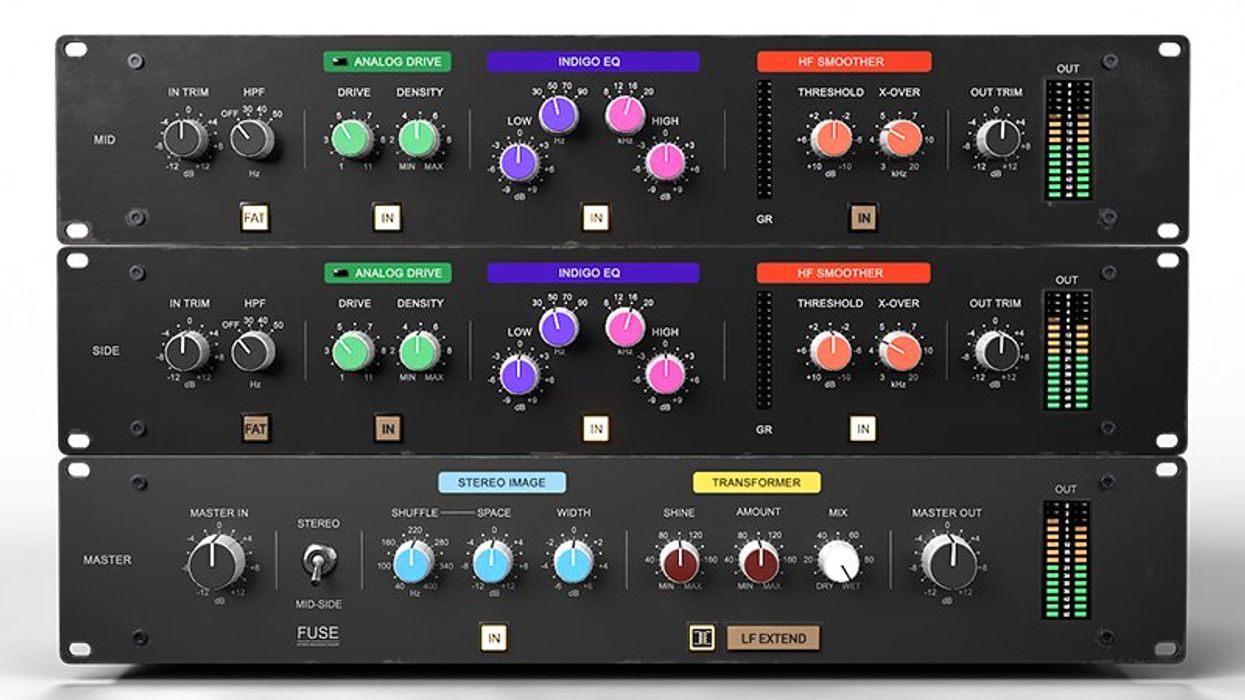
ILIO, leading distributor of virtual instruments and audio processing software, and Overloud, renowned for their innovative audio plug-ins and acclaimed Gem Series, proudly introduce Gem Fuse. Bringing together six analog-style processors in a single plugin, Fuse emulates an acclaimed modern stereo outboard unit with a level of authenticity never before achieved in software.
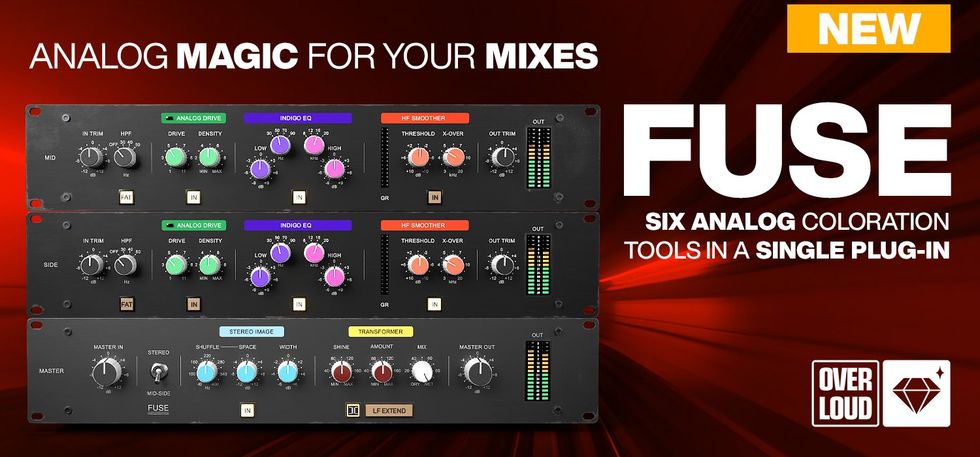
Designed for the mix bus and mastering, Fuse provides the tonal color, weight, and cohesion that define great analog hardware. At its heart is Overloud’s Harmonic Matching Technology, which precisely captures the frequency-dependent harmonics and “memory effect” of transformer-based circuits—where most digital emulations, even official ones, fall short.
Introductory Price: $69 (regularly $119).
Download the free trial or purchase here - https://www.ilio.com/overloud-gem-fuse
Six Processors, One Plugin
- Analog Preamp & HPF: Adds subtle coloration and warmth with a low-cut “Fat” option for preserving deep bass.
- Analog Drive: Harmonic saturation and gentle compression, from smooth thickening to aggressive tone.
- Indigo EQ: Musical low and high shelving EQ with carefully tuned phase response.
- HF Smoother: High-frequency dynamic processor for taming harshness with tape-like smoothness.
- Stereo Image: Frequency-dependent stereo enhancement based on the “Stereo Shuffling” technique.
- Transformer: Authentic low-end thickening and high-end sparkle through accurate transformer emulation.
Beyond the Hardware
Fuse enhances and expands upon the original hardware with modern conveniences:
- Resizable interface
- Built-in Mid-Side matrix
- Internal operating level calibration
- Multilevel undo/redo
- Extended parameter control for added flexibility
Whether placed across the mix bus or used in mastering, Gem Fuse adds the finishing character and cohesion that transform a mix into a record—now with the unmatched accuracy of Overloud’s Gem Series.
Learn more - https://www.ilio.com/overloud-gem-fuse
Cort Guitars Unveils the Earth GO: A Smart Acoustic Guitar for Modern Musicians
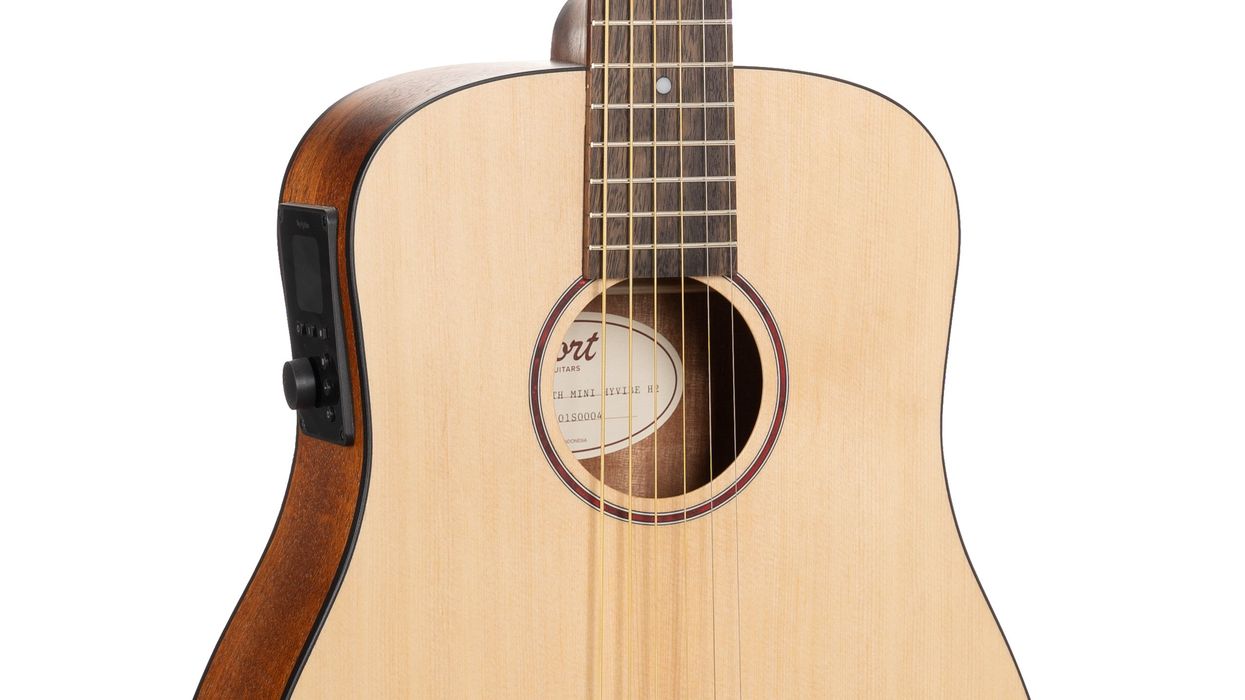
Cort Guitars announces the launch of the Earth GO, a compact acoustic guitar that seamlessly blends classic tonewoods with modern smart technology. Designed for musicians seeking portability, versatility, and innovative features, the Earth GO brings intelligent performance capabilities to a traditional acoustic form.
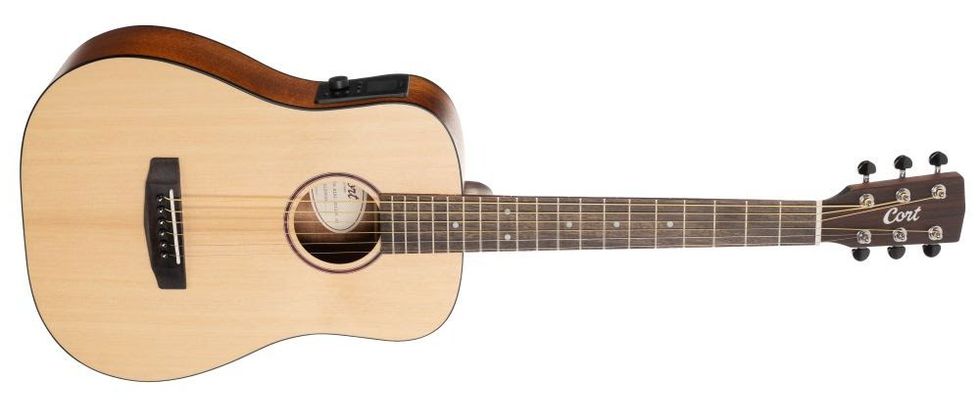
The Earth GO features a 3/4 size mini dreadnought body, making it ideal for travel, casual play, or players with smaller hands. A solid Sitka spruce top delivers clarity and responsiveness, while mahogany back and sides provide warmth and depth. This time-honored tonewood pairing ensures a balanced and resonant acoustic voice. The guitar’s neck is constructed from mahogany and shaped with a comfortable “C” profile, paired with a 22.8” (578mm) scale length for easy playability. A laurel fingerboard with 6mm white dot inlays and a 15.75” radius adds to the natural feel, while the PPS nut (43mm wide) and 19-fret configuration support accurate intonation. Both open pore and open pore brown burst finishes complete the vintage aesthetic.
At the heart of the Earth GO lies the HyVibe H2 smart system, which turns the guitar into a self-contained performance hub. Built-in features include customizable effects such as reverb, chorus, delay, tremolo, octaver, phaser, and distortion—without the need for external pedals. Players can stream backing tracks via Bluetooth, loop melodies, tune up with the integrated tuner, or keep time using the onboard metronome. Whether practicing at home or playing live, these intuitive tools offer unmatched creative freedom.
Hardware details include die-cast tuning machines with black knobs, a dual-acting truss rod for neck adjustments, and a laurel bridge paired with a PPS saddle. The Earth GO comes factory-equipped with coated strings for extended life and best feel. Each guitar includes a gig bag for even more portability and convenience when travelling.
For additional information on the Earth GO, please visit www.CortGuitars.com.
Street Price: $549.99 USD
Jazz Chords in a Rock Context
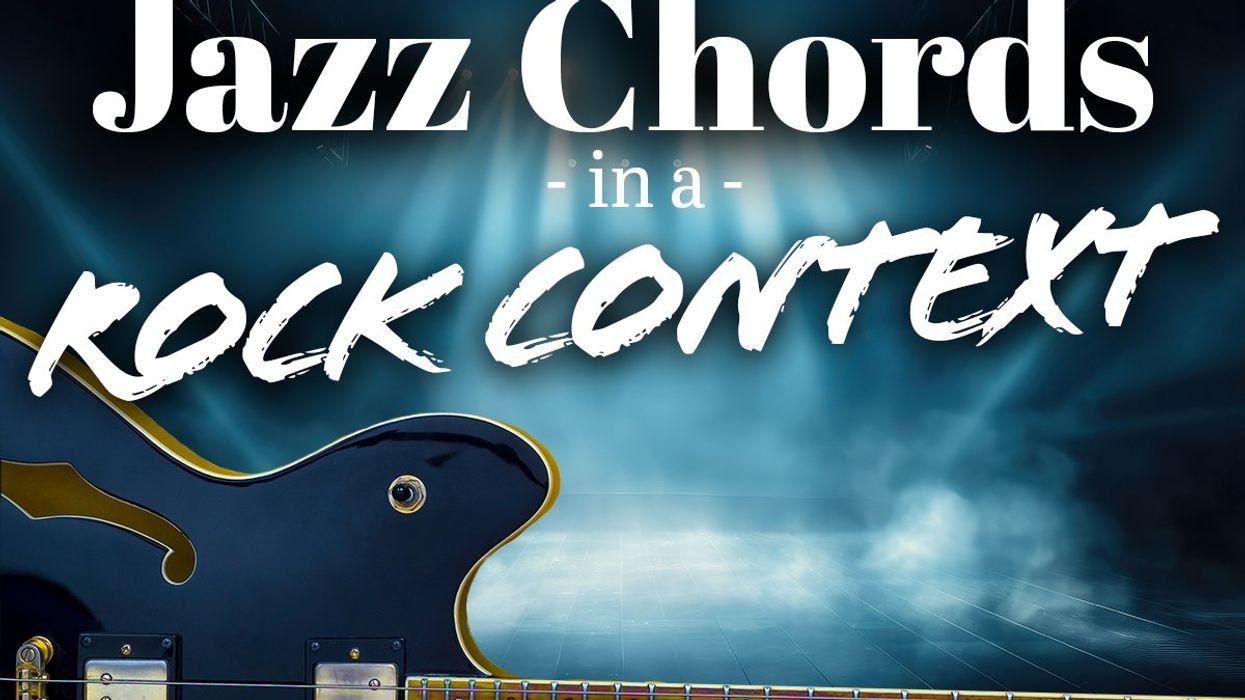
So-called “jazz” or “jazzy” chords were in use long before jazz, but it’s jazz musicians who have, arguably, made those most of 7th and extended harmonies. So, what are they? Simply put, jazz chords are triads—chords built from the 1, 3, and 5 of any given scale—with added 7, 9, 11, or 13 intervals. They can also include alterations, such as b5s, #5s, b9s, and #9s.
Rather than bog you down with more theory, let’s put these chords into practice, with plenty of points of reference from the rock genre. Along the way you should naturally start to develop an ear for, and an understanding of, their colorful sounds and benefits.
Classic Rock
Let’s start with one of the best-selling albums of all time, Pink Floyd’s Dark Side of the Moon. Maybe Floyd’s inclusion of jazzy chords is one of the reasons people still find this album appealing and refreshing.
Ex. 1
Ex. 1 is a variation on the end of Floyd’s “Time”—aka “Breathe (Reprise).” This example, complete with flange effect, demonstrates both Em9 and A13 arpeggios. In the key of D, that’s the IIm chord moving to the V chord, an E Dorian sound. These are followed by the essential chord shapes for both major 7 and minor 7 (in this case Cmaj7, Bm7, Fmaj7, Em7). We end with the so-called “Hendrix chord,” a 7#9, moving to a 7b9 chord (uncommon in rock), resolving to a second major 7 shape. This is a tremendously valuable progression, and time (no pun intended) should be taken to memorize all of the chord shapes.
Ex. 2
Ex. 2 comes to us via Led Zeppelin’s eclectic double album Physical Graffiti, specifically “Ten Years Gone.” This track contains more major 7 chords, including one slash-chord version. A slash chord is when the note in the bass is different than the root of the chord, in this case Bbmaj7/A. Here we also find a diminished 7th chord (this is another fundamental shape all guitarists would do well to memorize) functioning as a hip passing chord between Amaj7 and Em7.
Ex. 3
Ex. 3 has the great Edward Van Halen getting into the jazzy chord game, kind of. This progression, à la “Secrets,” contains sus chords—triads wherein the 3rd is replaced (or suspended) by the 2nd or 4th. And, while not uncommon in jazz, these are probably not the first jazz chords that come to mind. Nevertheless, Van Halen’s use of them is unique and worthy of mention. After running through the sus chords, Eddie lands on a rather ambiguous chord that I have labeled Dmaj9, but which could also be thought of as an A/D. Either way, it’s the sophisticated nature of this chord that earns it a spot in this lesson.
Ex. 4
While Bob Marley is known as a reggae icon, there was plenty of crossover between reggae and rock, which allows us to take a look at Marley’s “Waiting in Vain” in Ex. 4. This example once again features the major 7th shape we worked on in Ex. 1, as well as a new shape for major 7 chords—in this instance, the Gmaj7. This shape can be tricky for players as it employs all four fingers, with the pinky far across the fretboard.
Funky Strums
Ex. 5
Let’s keep moving with some jazz chords in a funky rock situation. Ex. 5 is an imitation of Steely Dan’s “Kid Charlemagne,” featuring four different chord shapes, including an F6, with the bass note fretted with the thumb. Make an effort to mute the 5th string on each of these chords. Also, note how the Bb13 chord substitutes for an E7#9 at the end (other than their roots, the chords share three of the same notes).
Ex. 6
Ex. 6, reminiscent of the Red Hot Chili Peppers’ “If You Have to Ask,” contains the biggest variety of chords in this lesson, and time should be taken to master both the shapes and the funky right-hand strum pattern. These 9th chords are funk essentials but also play a big role in jazz.
Jazzy Metal Arpeggios
Our final two examples represent the world of contemporary metal. In both cases, their functions as mellow, arpeggiated intros that transition into heavier verses and choruses, have their roots in the classic metal of the 1970s and 1980s.
Ex. 7
Ex. 7 was inspired by Deftones’ “Sextape” and contains a lush major 7 shape, moving between the I and IV chords. In the first four measures, the shape contains only fretted notes; in the following four, the open high-E string is included, adding even more color, changing the major 7th into a major 9 and major 6.
Ex. 8
Finally, Ex. 8 features not only jazzy arpeggios, but also some mixed meters, with the time signature moving between 6/8 and 7/8. This progression was inspired by “The Coma Machine” by Between the Buried and Me, and introduces us to both a minor 6 chord and an augmented shape.
Keep It Clean?
You may have noticed that all of the examples in the lesson (except for the last group of arpeggios) feature a clean, non-distorted tone. One reason for this is that all the points of reference (except Ex. 8) I mentioned were recorded with clean tones. Another reason is that using distortion on these chords with extensions can make them sound messy and undefined, detracting from the point of the extensions. By contrast, distortion on power chords makes the chords sound sharp and biting. That said, feel free to crank up the overdrive and test for yourself. With enough experimentation, you may create the perfect combination of rock and jazz.
IK Multimedia Releases iLoud Precision MKII Studio MonitorsWith the New ARC X System
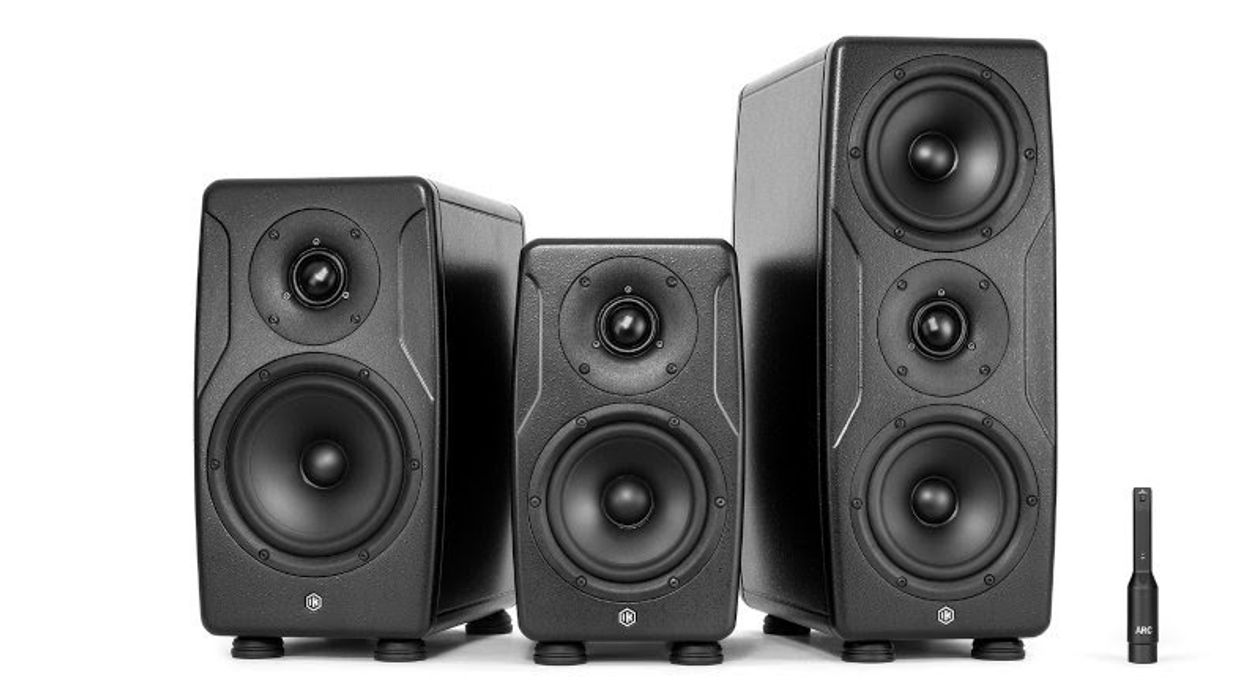
The next generation of IK's critically acclaimed studio monitors offers superior acoustic correction with ARC X, along with enhanced performance and more mounting options.
IK Multimedia is proud to release the iLoud Precision MKII studio monitors, which build on the legacy of their critically acclaimed predecessor to offer unparalleled accuracy, advanced DSP control, and seamless integration with the new ARC X room correction and calibration software, providing the fastest and most accurate mixing yet.
Next-level Precision and Integration
When monitors reveal every nuance, issues can be addressed before they develop into problems. The iLoud Precision MKII delivers the unfiltered truth of a mix, enabling users to work more efficiently, maintain their flow, and finish with confidence, knowing that the sound will translate on any system, anywhere. Whether producing music, mixing for clients, or creating content for global platforms, these monitors provide the ultimate reference.
Key MKII Enhancements:
- New ARC X Acoustic Correction: ARC X dramatically upgrades Precision's auto-calibration to full acoustic correction.
- ARC X Customization: Coupled with new speaker customization options and virtual monitor profiles, ARC X and iLoud Precision MKII deliver the most advanced and versatile mixing experience yet.
- New Advanced Tweeter Design: Ultra-lightweight construction and graphene reinforcement enhance rigidity, improve transparency, and minimize distortion.
- Improved Enclosure: A new enclosure optimizes sonic clarity, providing precise transient response and an improved soundstage presentation critical for immersive setups.
- New Mounting Options: New built-in fixing mounts and dedicated metal brackets (available separately) make it easier to mount speakers and precisely set angles for optimal positioning.
Reference-grade Clarity and Translation
The Precision MKII is designed to deliver best-in-class transparency. Its linear phase and time-coherent design ensure exceptional imaging accuracy, allowing users to position every element of their mix with confidence. With an impressively flat response of ±1 dB from 45 Hz to 30 kHz and an extension down to 37 Hz at -4 dB, it provides full-spectrum clarity and precise low-end reproduction.
The outcome is impressive clarity across the frequency range, enabling users to create more efficiently, make informed decisions, and trust that their mix will translate effectively anywhere.
Includes New ARC X System
The Precision MKII integrates seamlessly with the ARC X system, IK's new Advanced Response Correction technology, delivering intelligent 3D acoustic correction directly into users' workflows.
ARC X enhances IK's award-winning ARC 4 by automatically analyzing the listening area at three distinct heights, creating a 3D snapshot of the space and effectively identifying acoustic issues without over-processing the sound. The result is a remarkably natural correction that feels like simply mixing in a properly treated room.
With just a few moments of measurement, ARC X generates and applies a precise correction for a flat frequency response, eliminating room-induced issues that can obscure mixing decisions. The correction profile is then loaded onto the iLoud monitor, which stores the profile for standalone use.
Beyond correction, ARC X enhances any setup with customizable system tuning and advanced speaker emulation. Users can tailor their monitoring systems to match their personal preferences or emulate over 20 iconic speaker systems, ranging from high-end studio monitors to consumer playback devices. Whether working in a professional studio, a treated home environment, or a portable setup, ARC X ensures that all monitors function at their full potential.
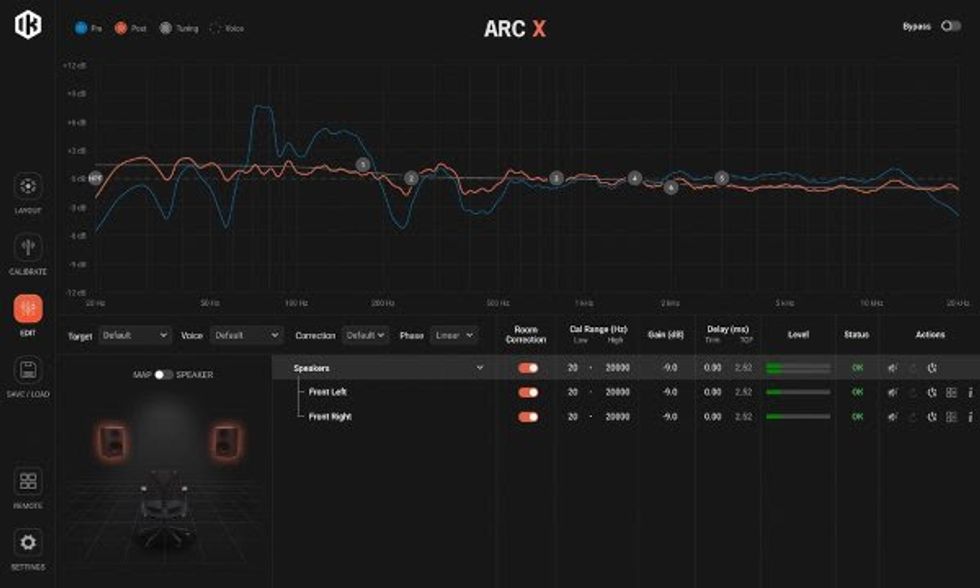
A Free Update and Upgrade
ARC X software replaces both X-MONITOR and ARC 4 software and comes included with the Precision MKII. Registered owners of the original iLoud Precision studio monitors can download ARC X for free through the IK Product Manager, along with the firmware update below.
ARC X is also fully compatible and free for all registered owners of iLoud Micro Monitor Pro, iLoud MTM MKII, ARC Studio, and ARC 4 software, enabling users to mix more effectively anywhere, whether on their iLouds or through the plug-in on another set of monitors.
A Future-proof Investment
The Precision Series MKII features completely redesigned firmware, enabling faster feature updates within the ARC ecosystem. This leads to continuous improvements in setup, correction, and control, keeping systems at the forefront of audio innovation. With seamless ARC X integration, users will benefit from automated room correction and advanced calibration, ensuring their studio monitor remains cutting-edge.
Professional Integration
Built-in fixing mounts and optional mounting brackets simplify the integration of the iLoud Precision MKII into immersive environments such as Dolby Atmos rooms or complex multi-channel setups. For enhanced control, the iLoud Precision Wired Remote Control is a compact device that allows users to switch between up to four ARC X profiles, assign functions like Mute or Dim, and directly manage the room correction process from their listening position.
With unmatched transparency, precision, accuracy, and advanced calibration tools, the iLoud Precision MKII redefines what's possible in modern monitoring, enabling users to create more efficiently, finish with confidence, and trust their audio.
Pricing and Availability
iLoud Precision MKII studio monitors are available for purchase from the IK Multimedia online store and IK-authorized dealers worldwide at the listed prices. All Precision models include ARC X control software and plug-in, and Precision pairs also come with an ARC Measurement microphone (a $/€199.99 combined value).
iLoud Precision 5 MKII - €699.99/$799.99* ea. - 5" Woofer + 1.5" Tweeter, 135W RMS
iLoud Precision 6 MKII - €799.99/$899.99 ea. - 6.5" Woofer + 1.5" Tweeter, 150W RMS
iLoud Precision MTM MKII - €899.99/$999.99 ea. - 2 x 5" Woofers + 1.5" Tweeter, 175W RMS
iLoud Precision Isolation Pods - $/€49.99 - 4-pack (suitable for one monitor)
iLoud Precision MKII Mounting Brackets - $/€99.99 (5 and 6), $/€129.99 (MTM)
iLoud Precision Remote Control - $/€99.99
ARC X - $/€99.99 intro price (reg. $/€199.99) - Advanced room correction plug-in and measurement microphone.
*All pricing is excluding taxes.
For more information about the iLoud Precision MKII series or to see the studio monitors in action, please visit: www.ikmultimedia.com/iloudprecision


